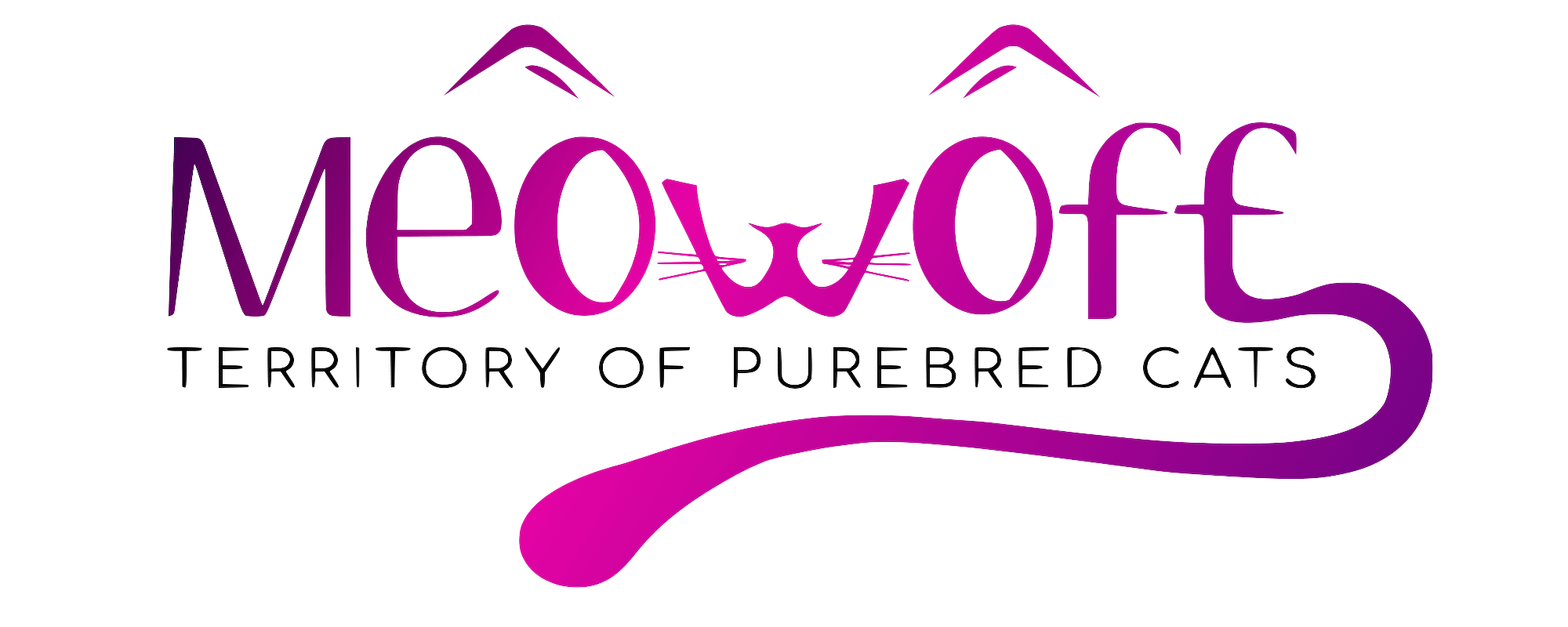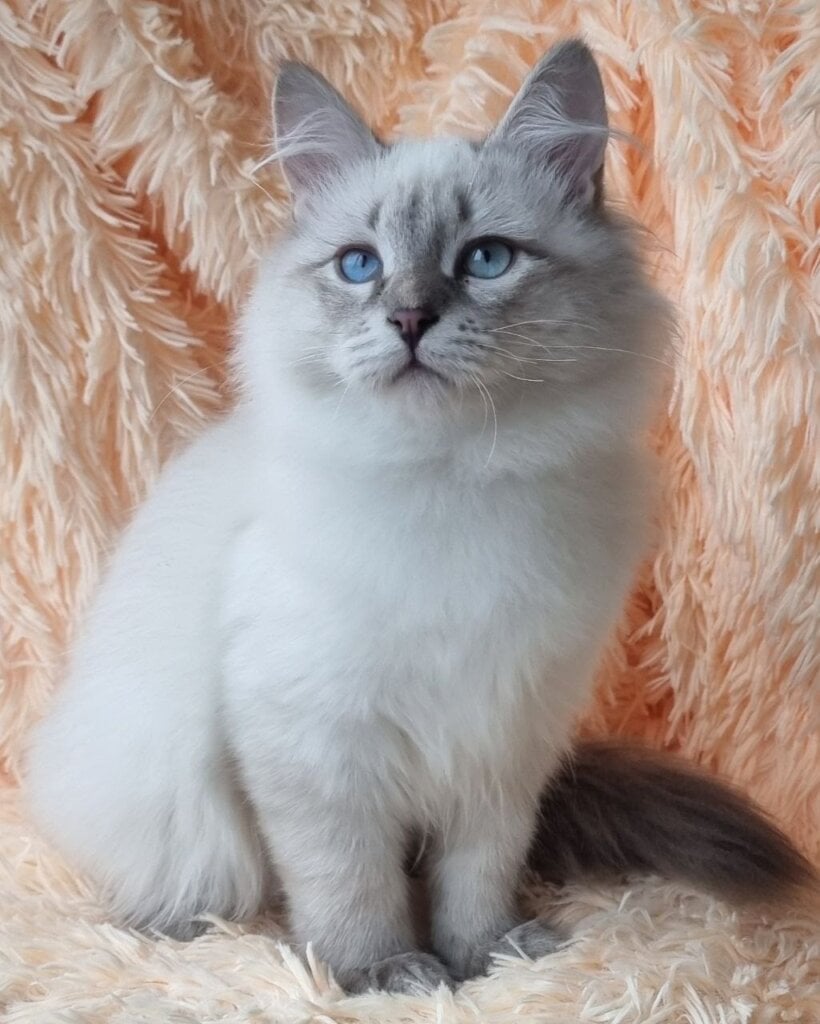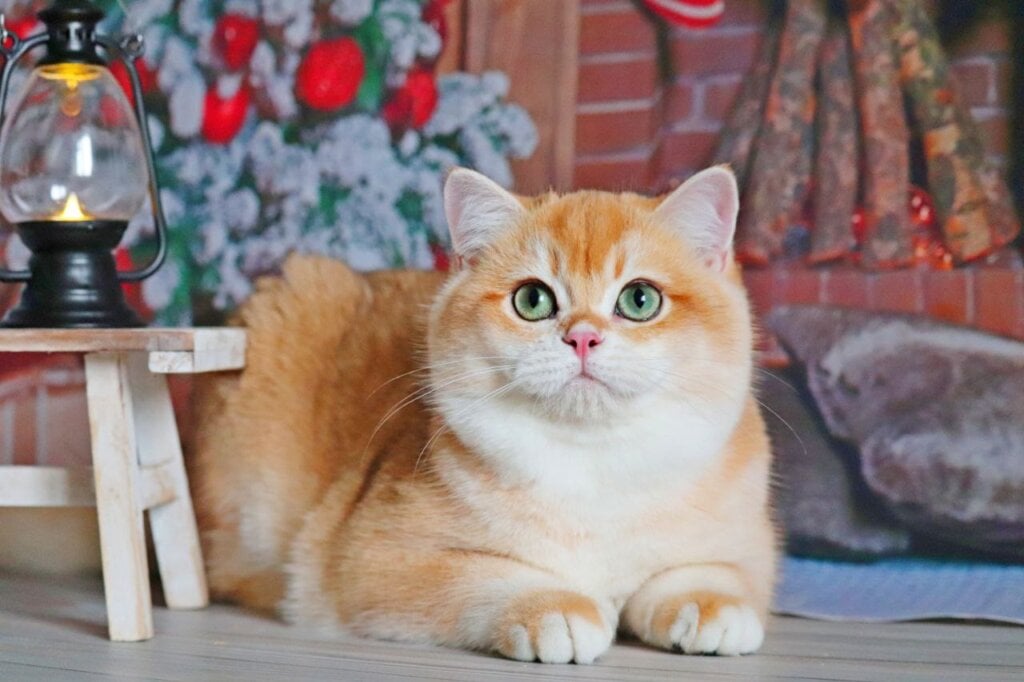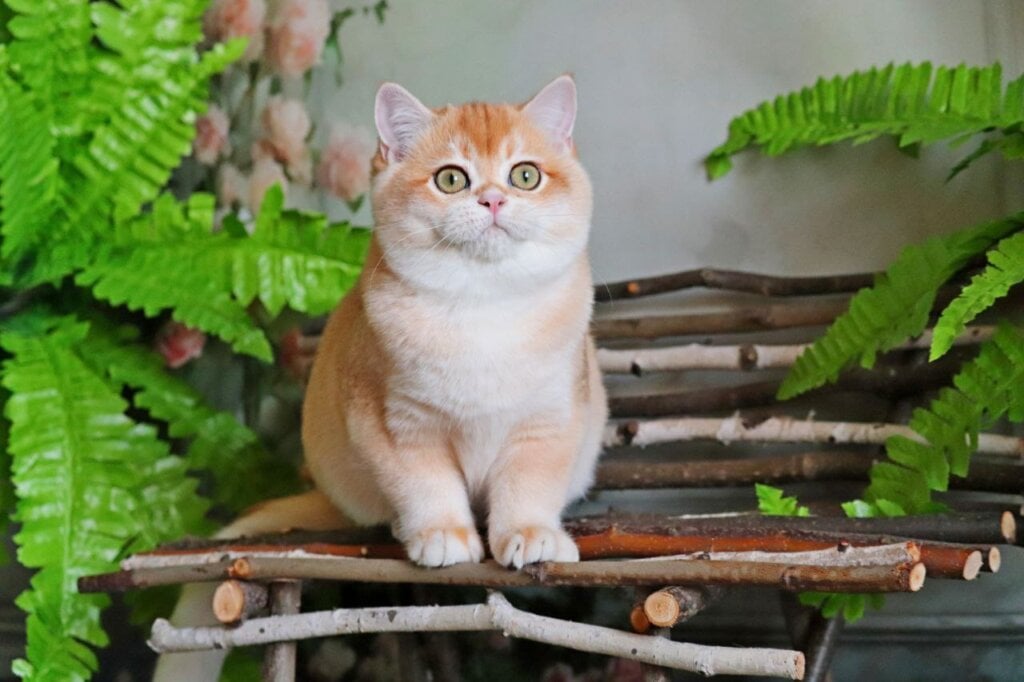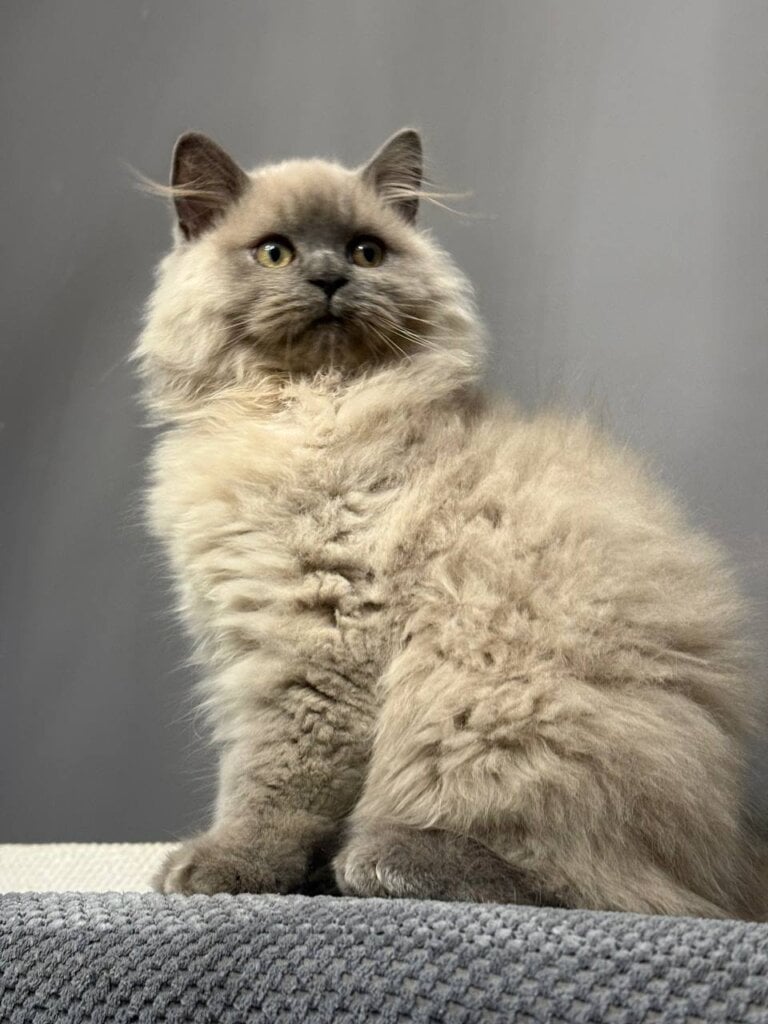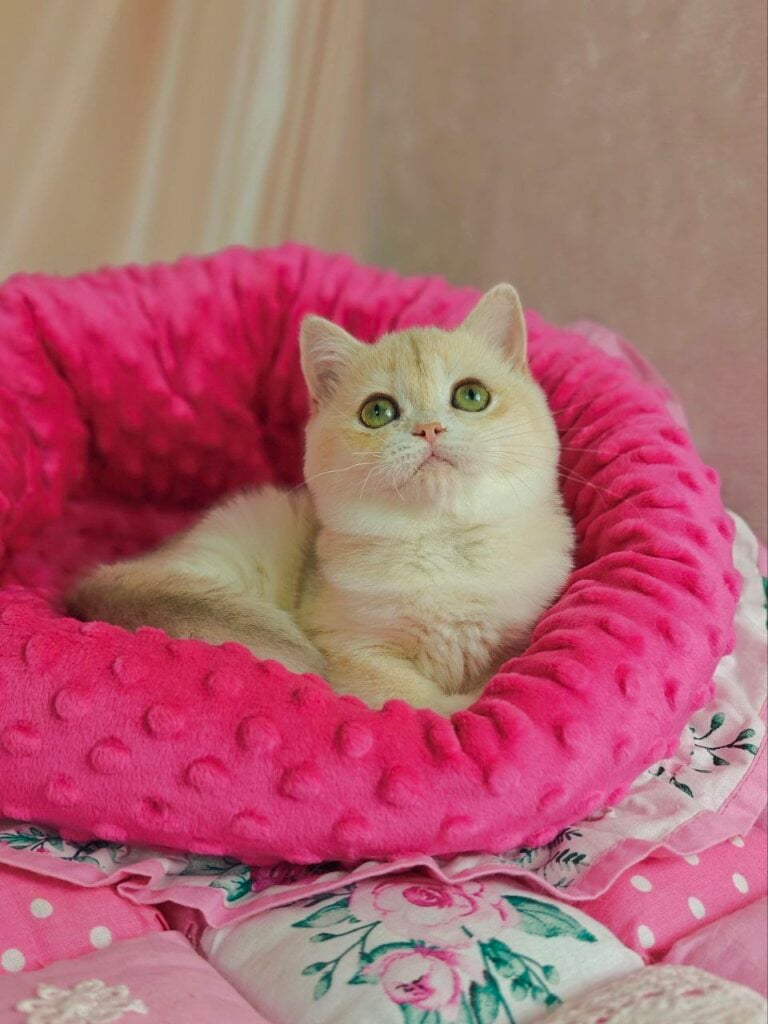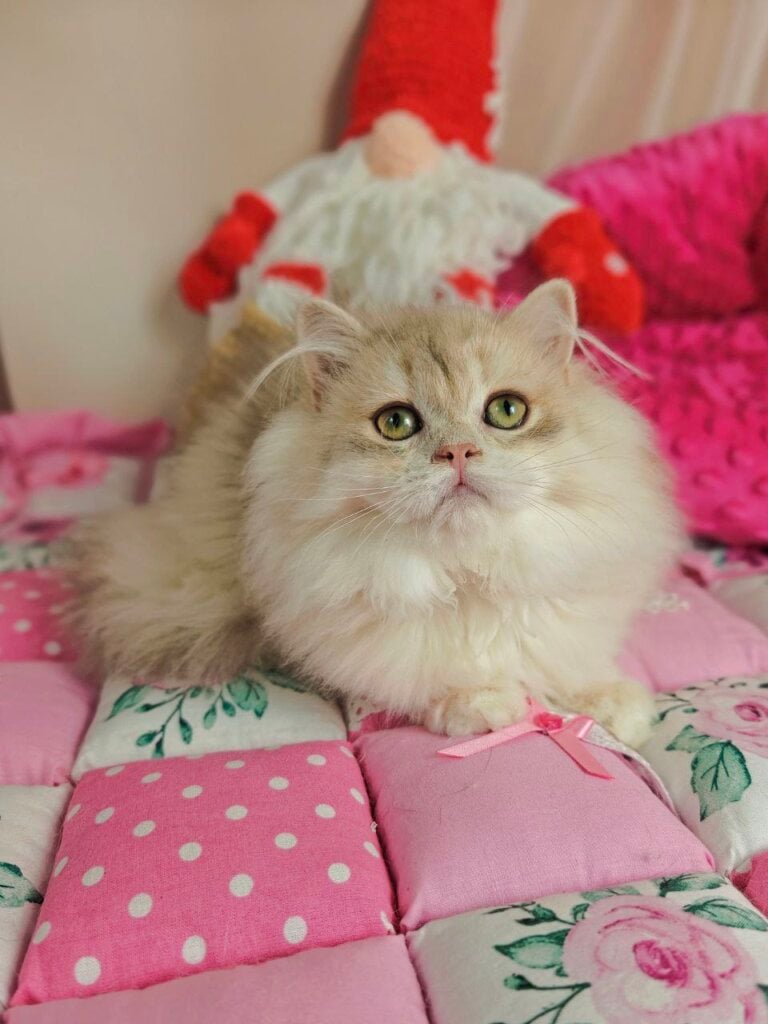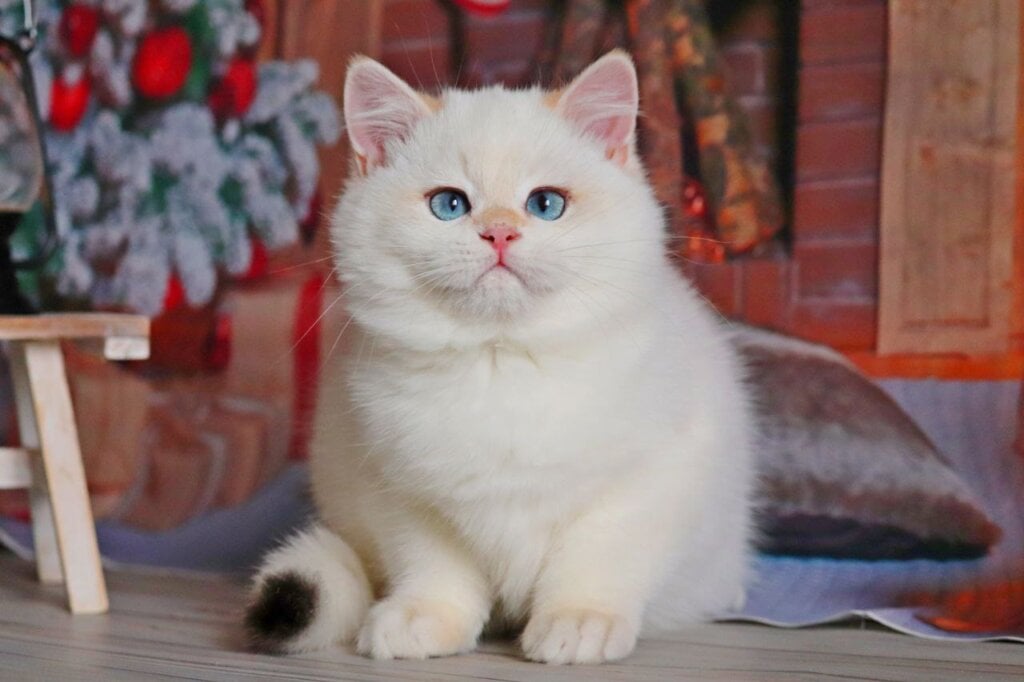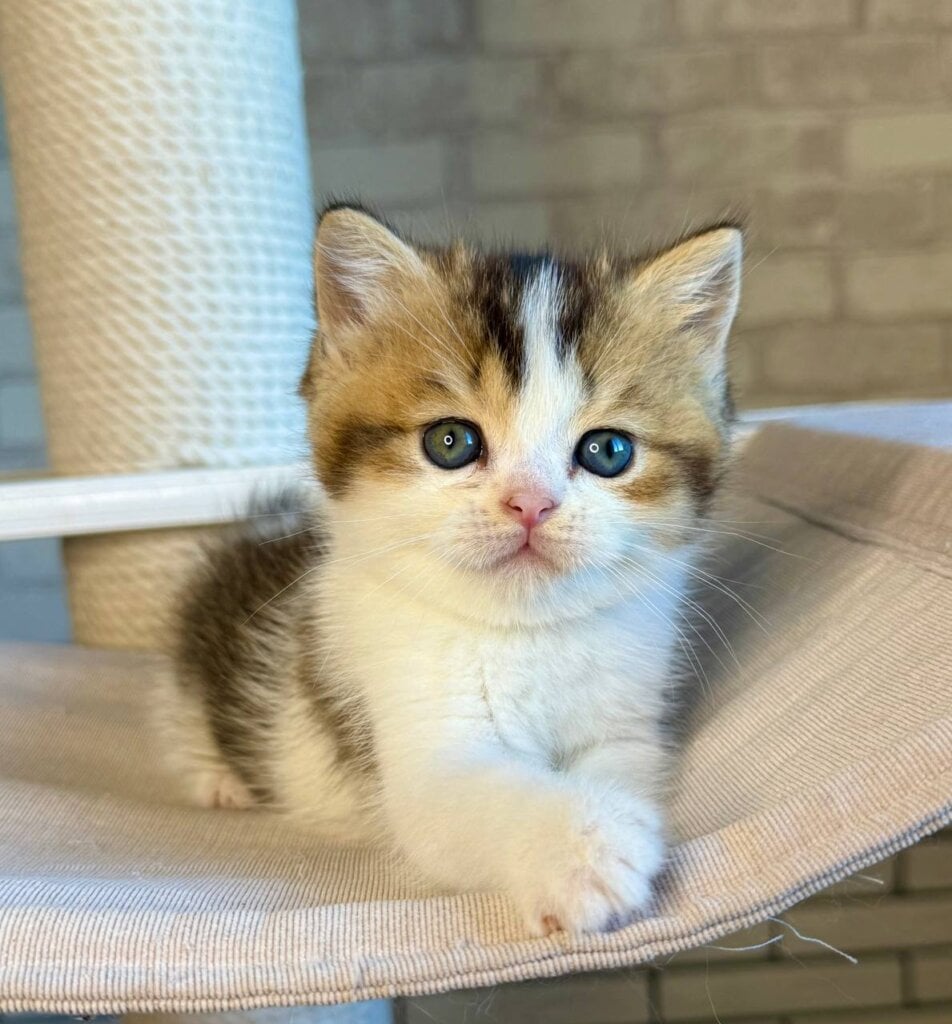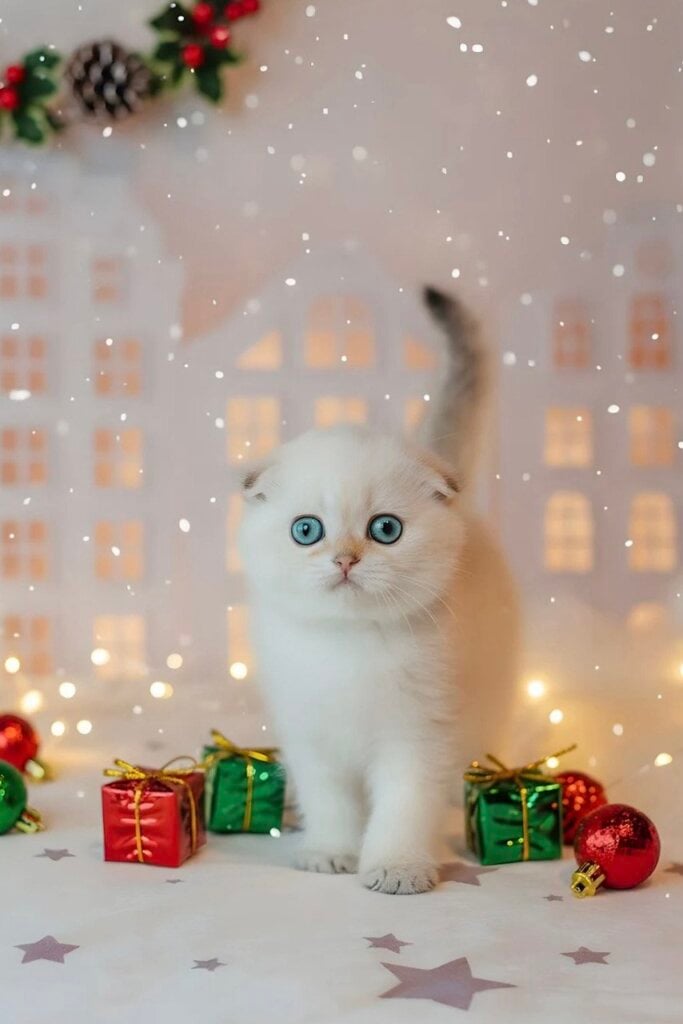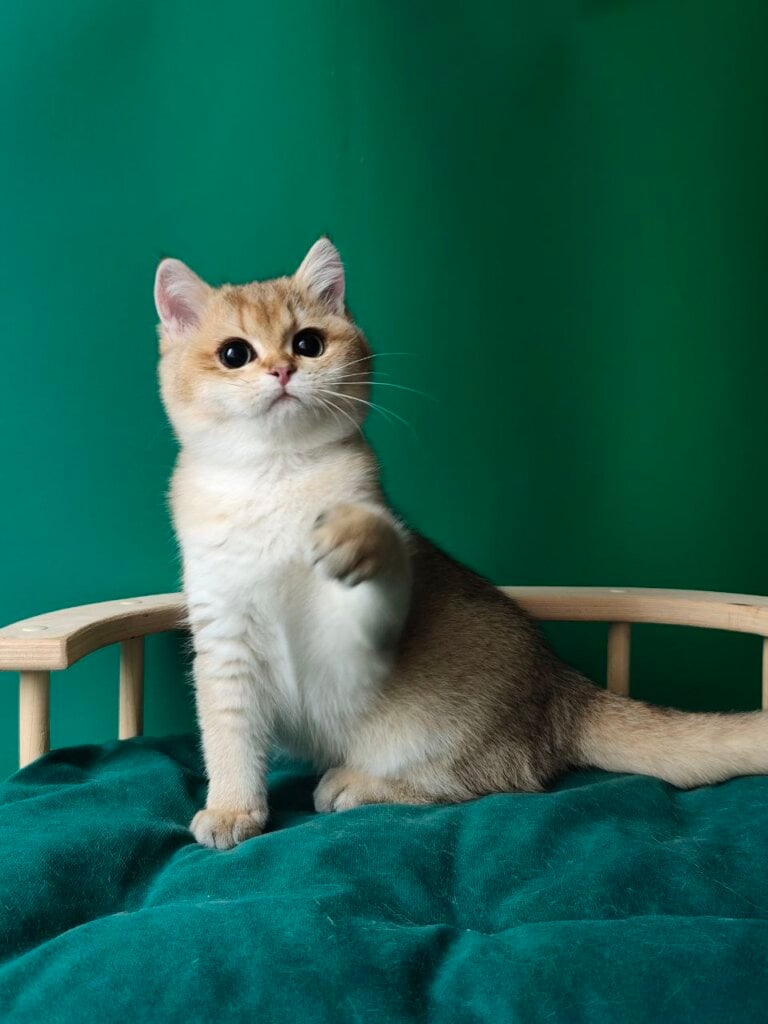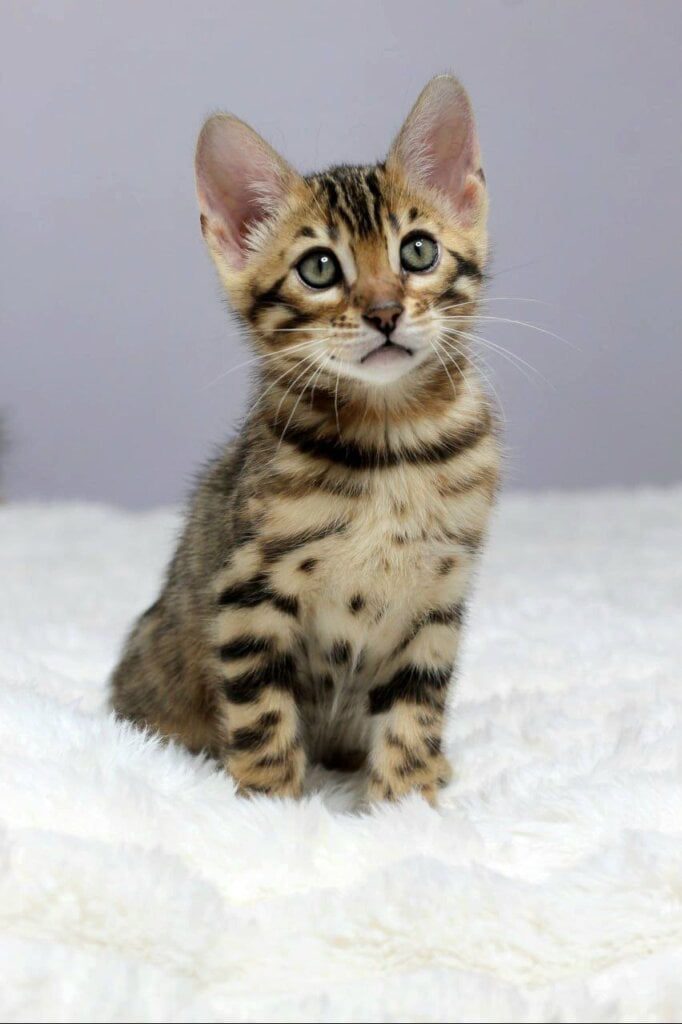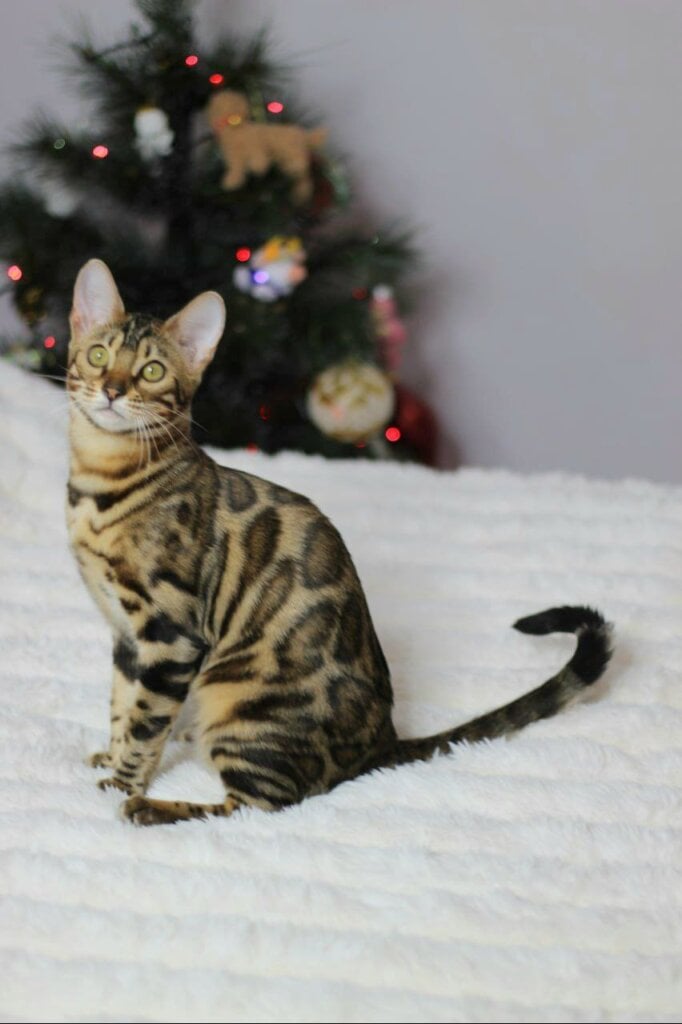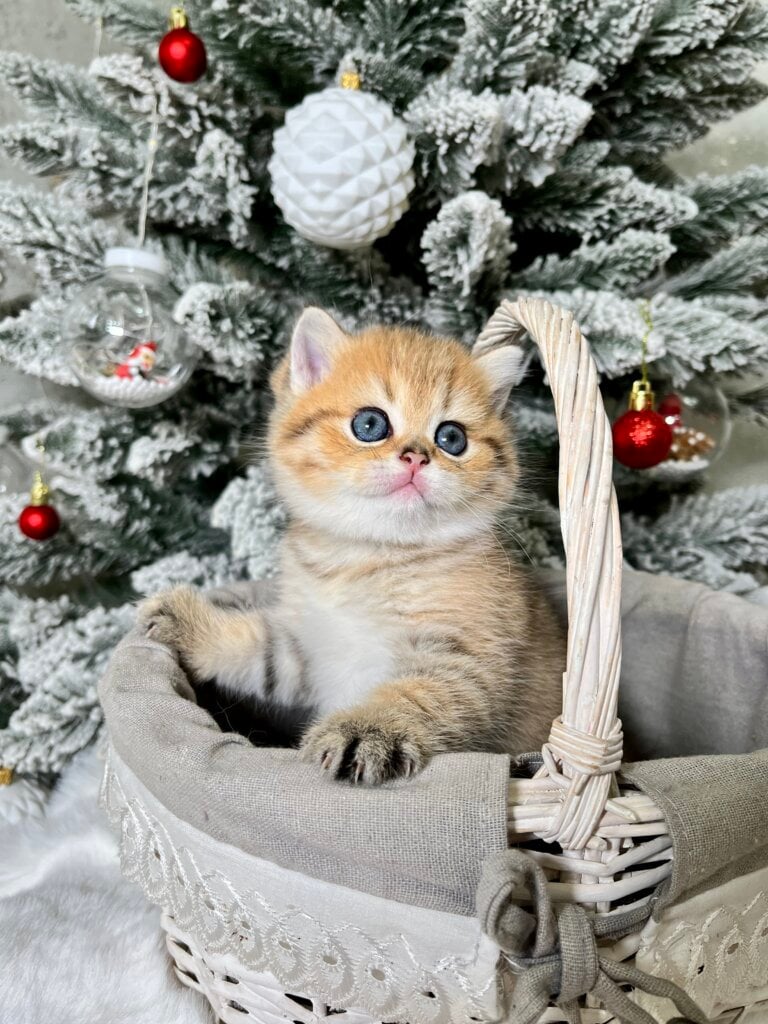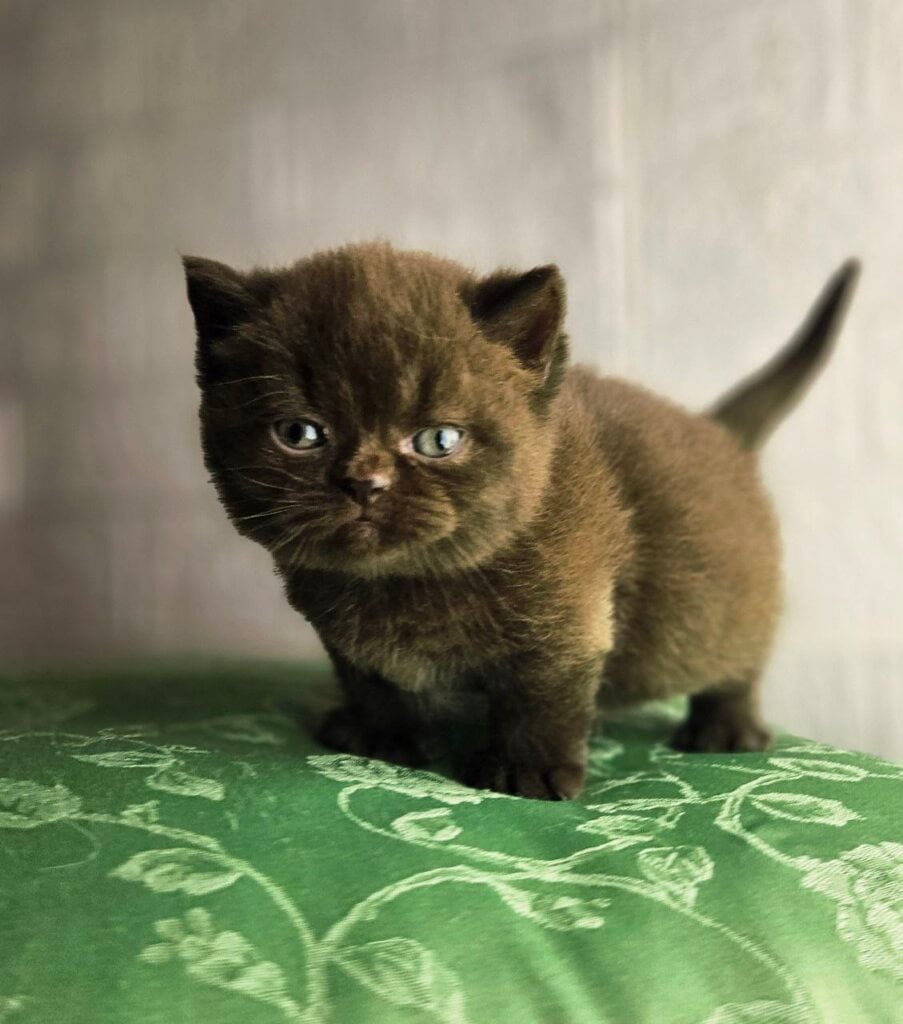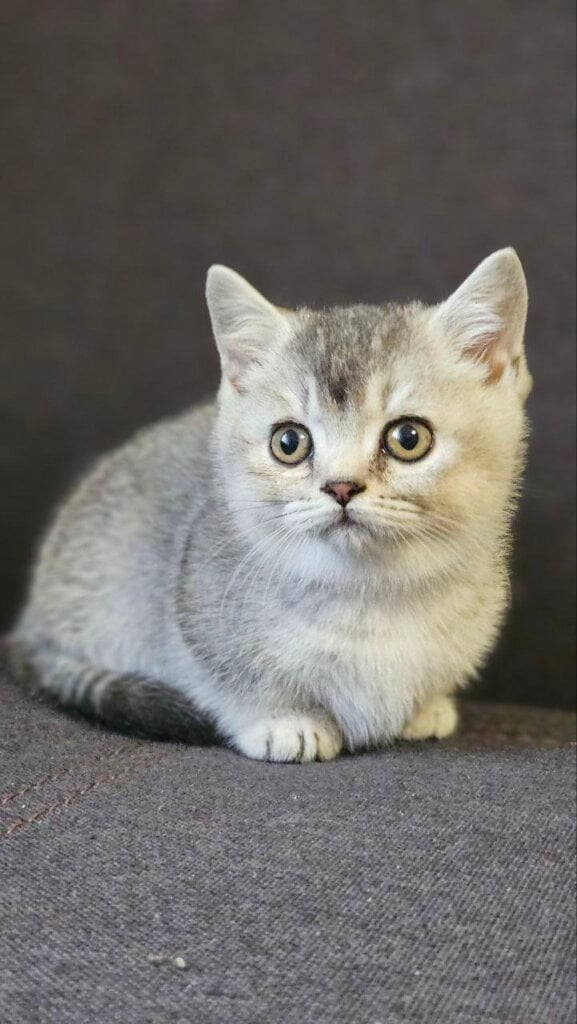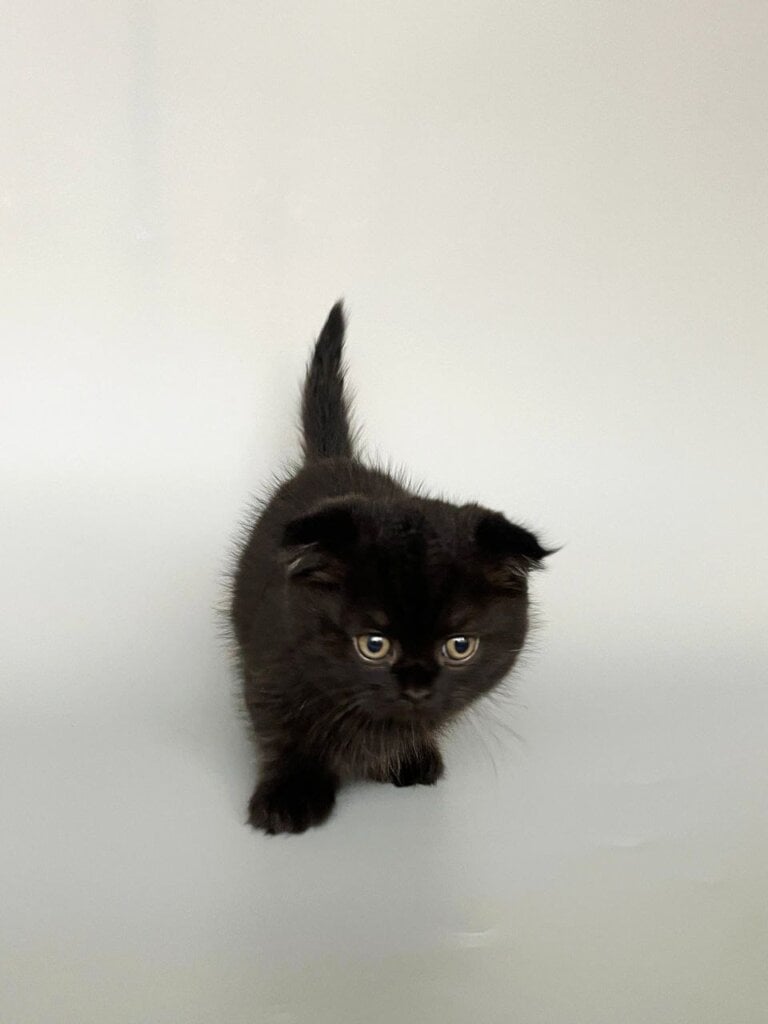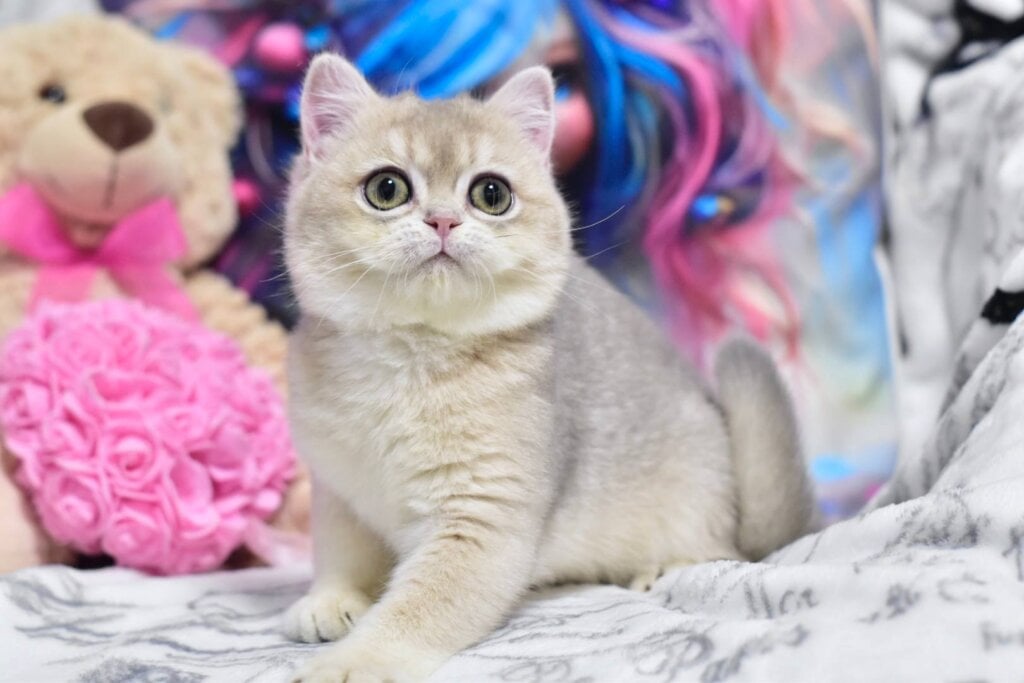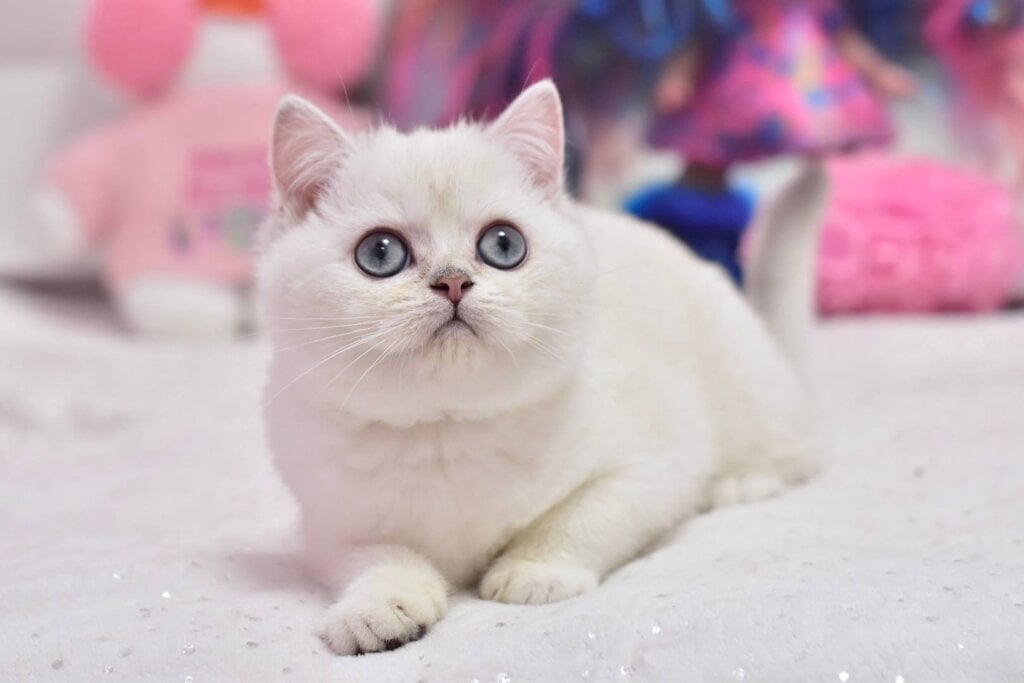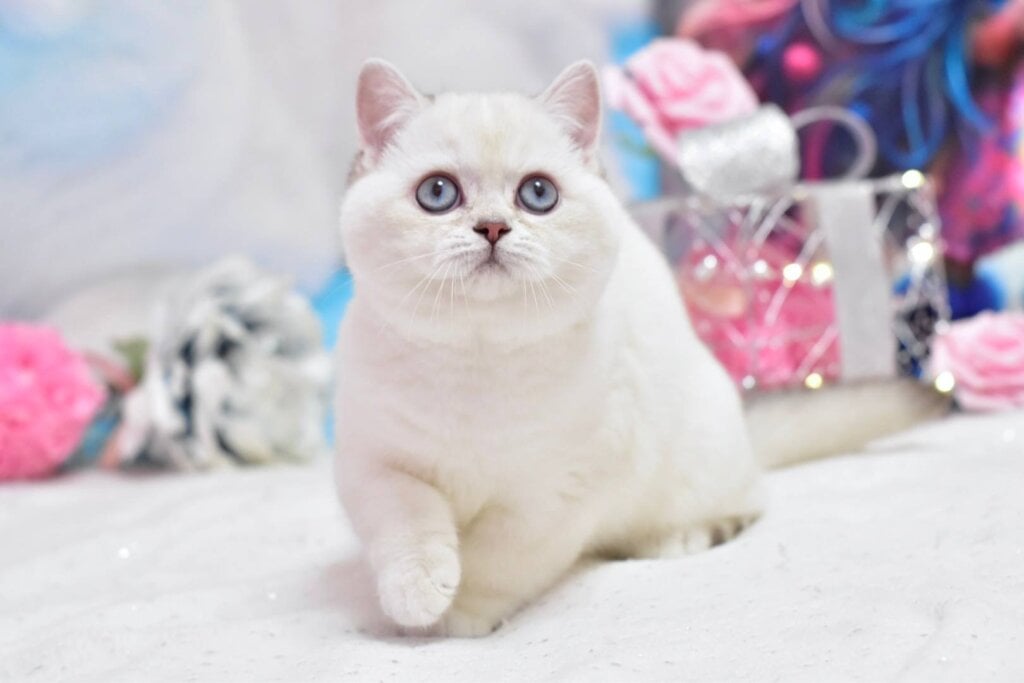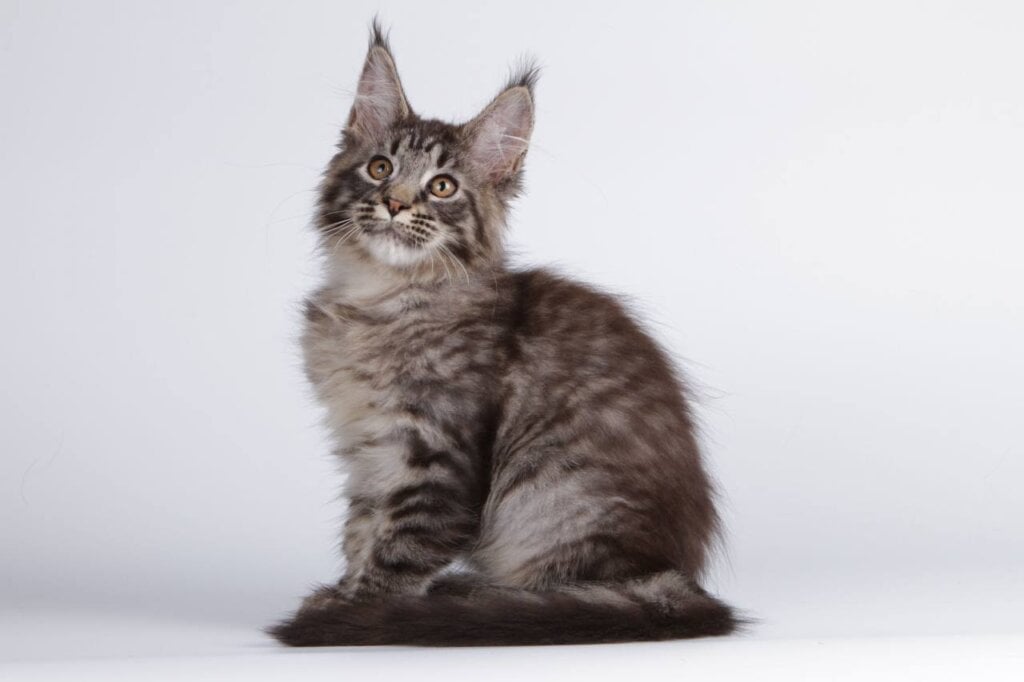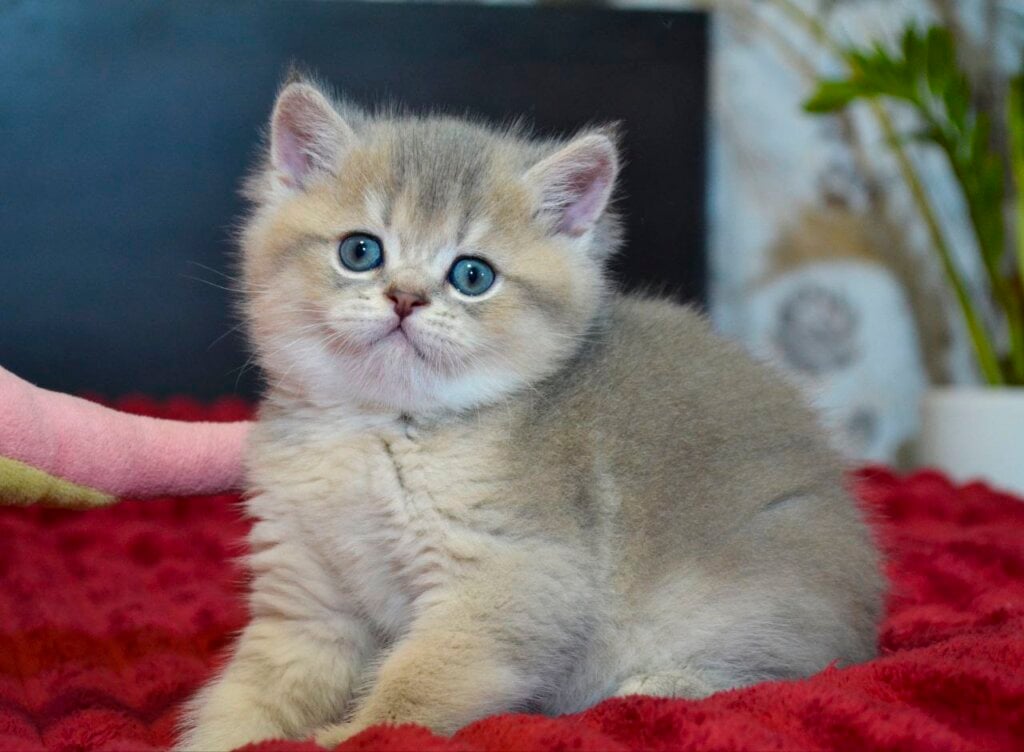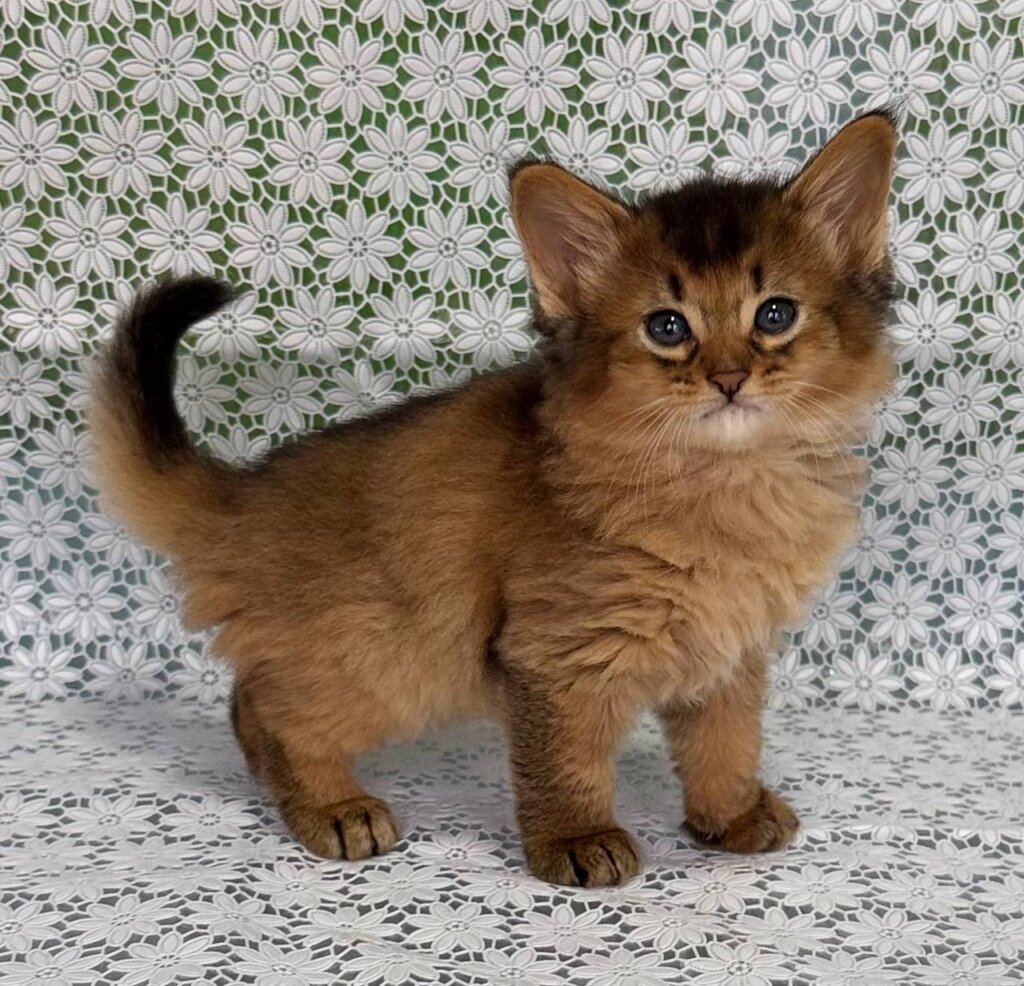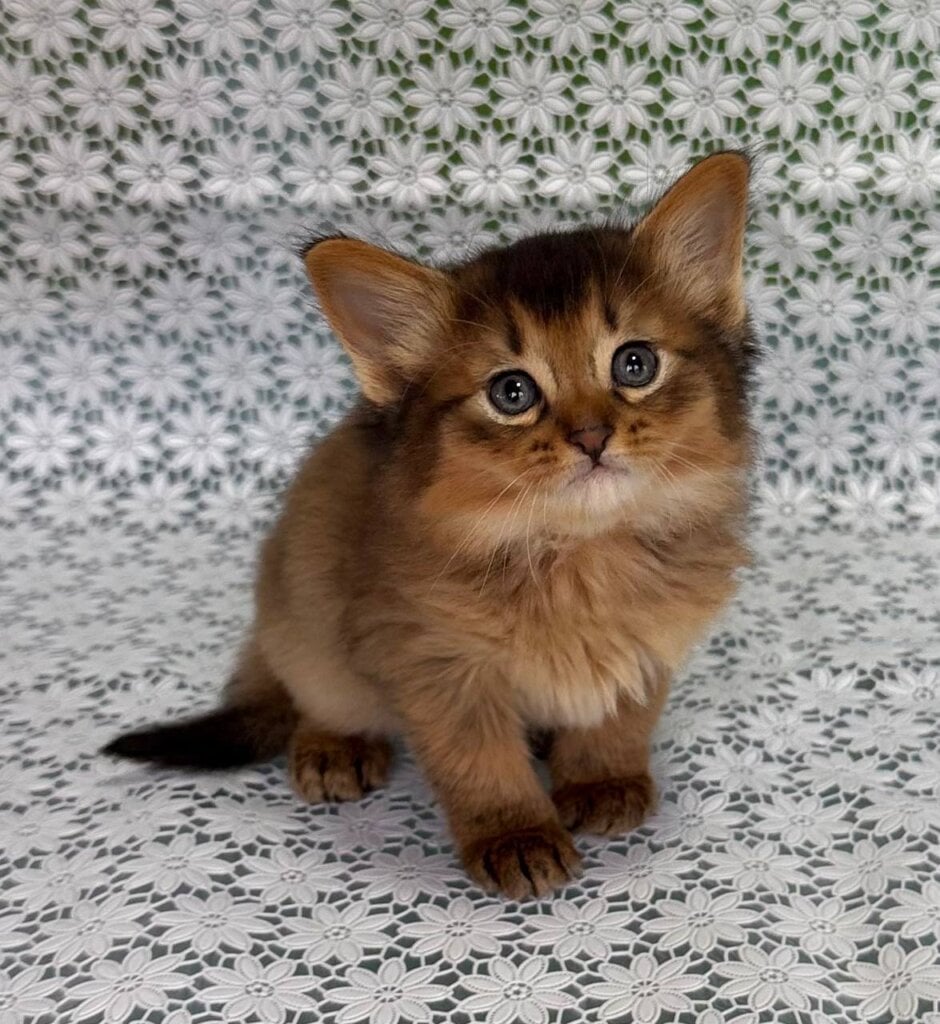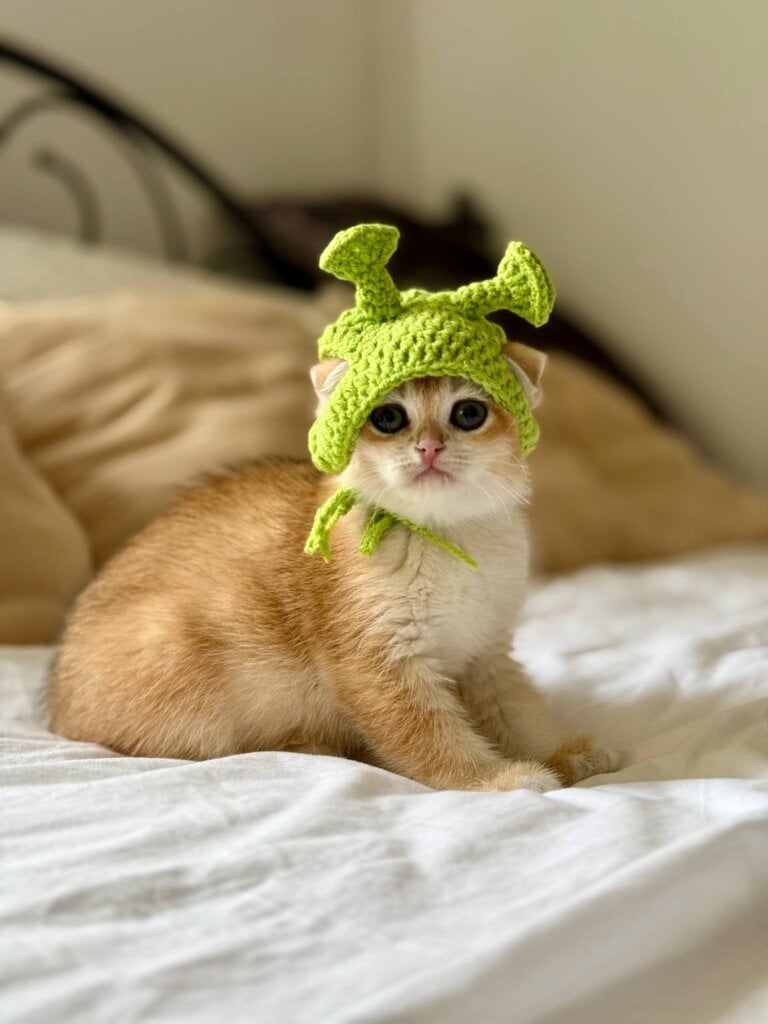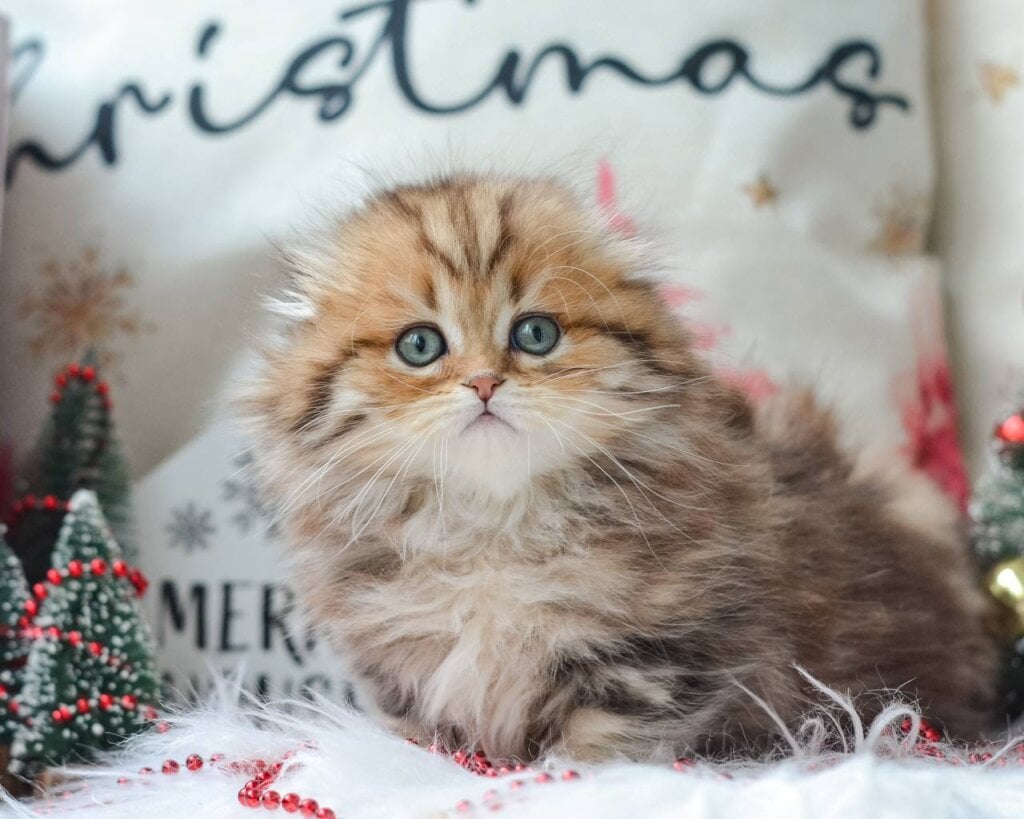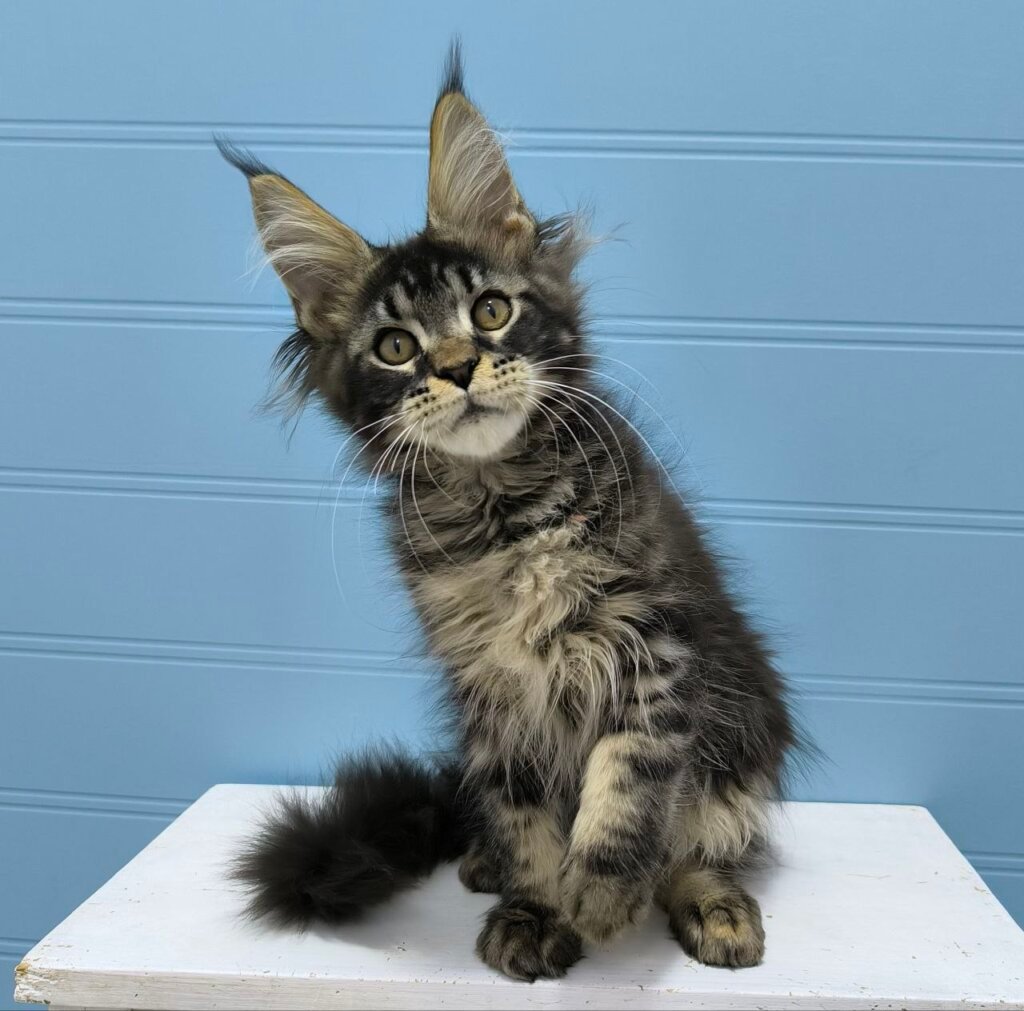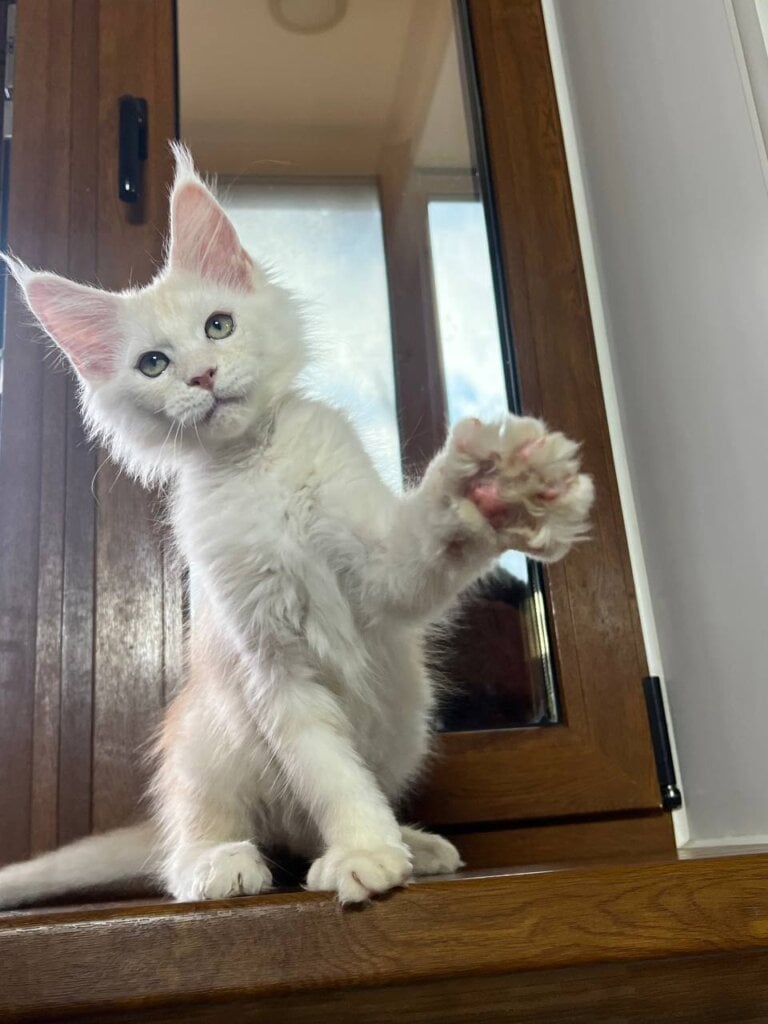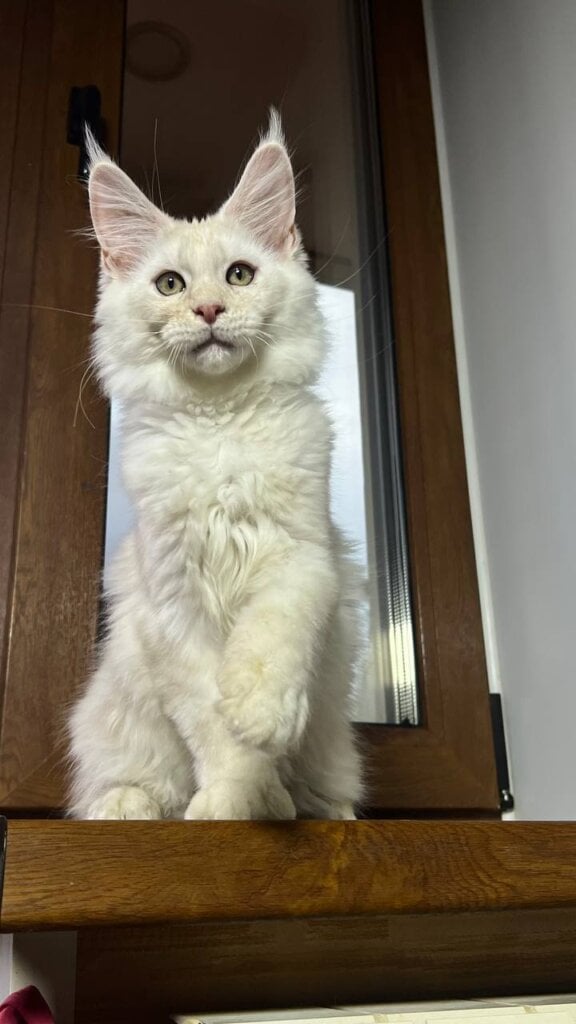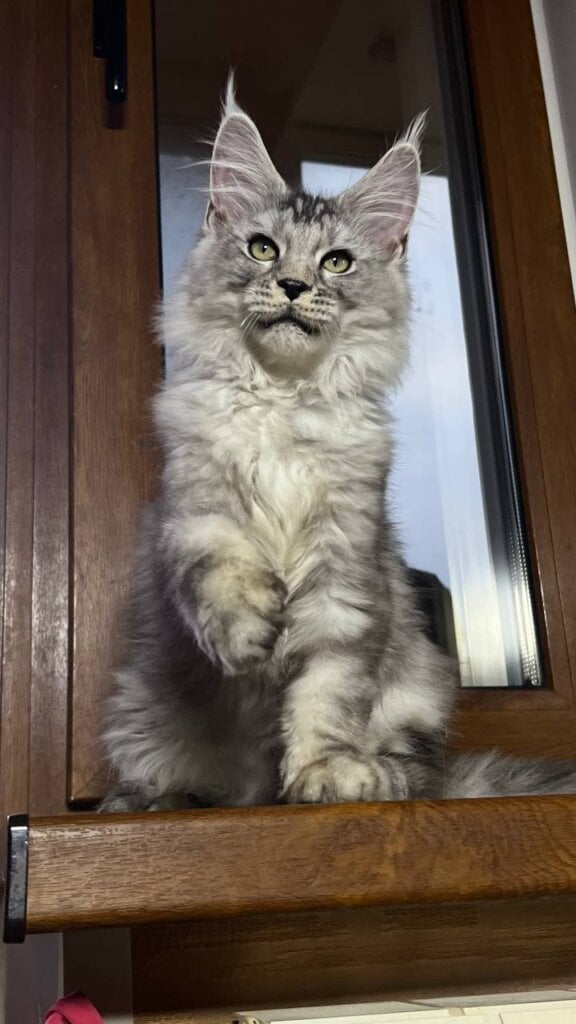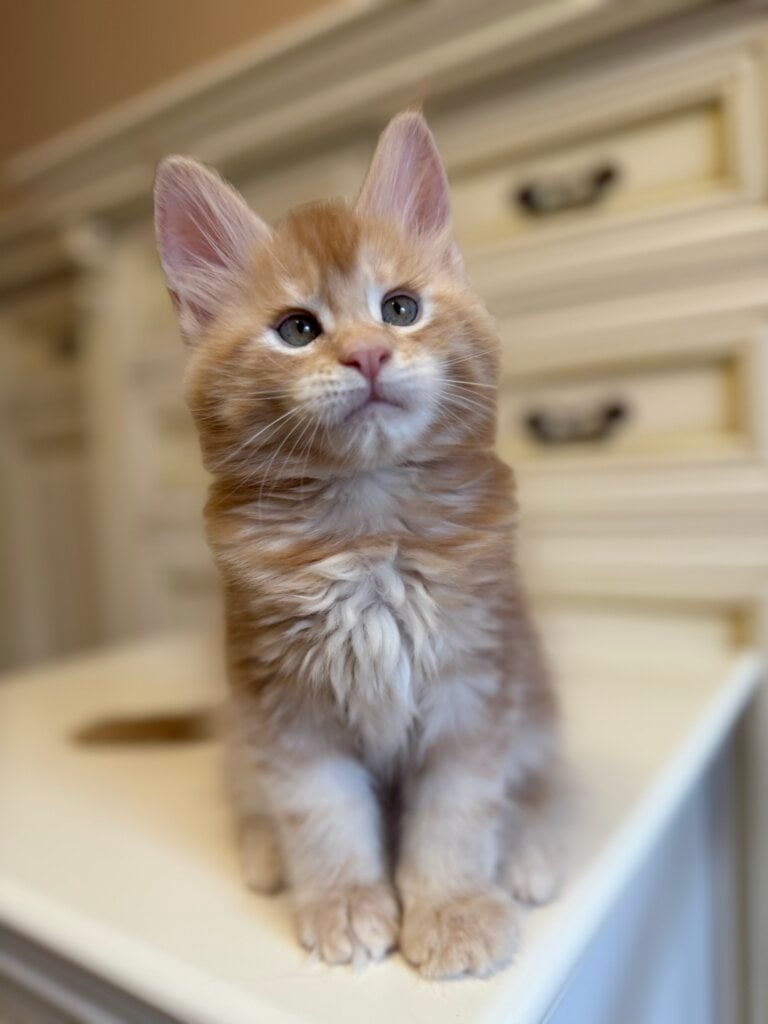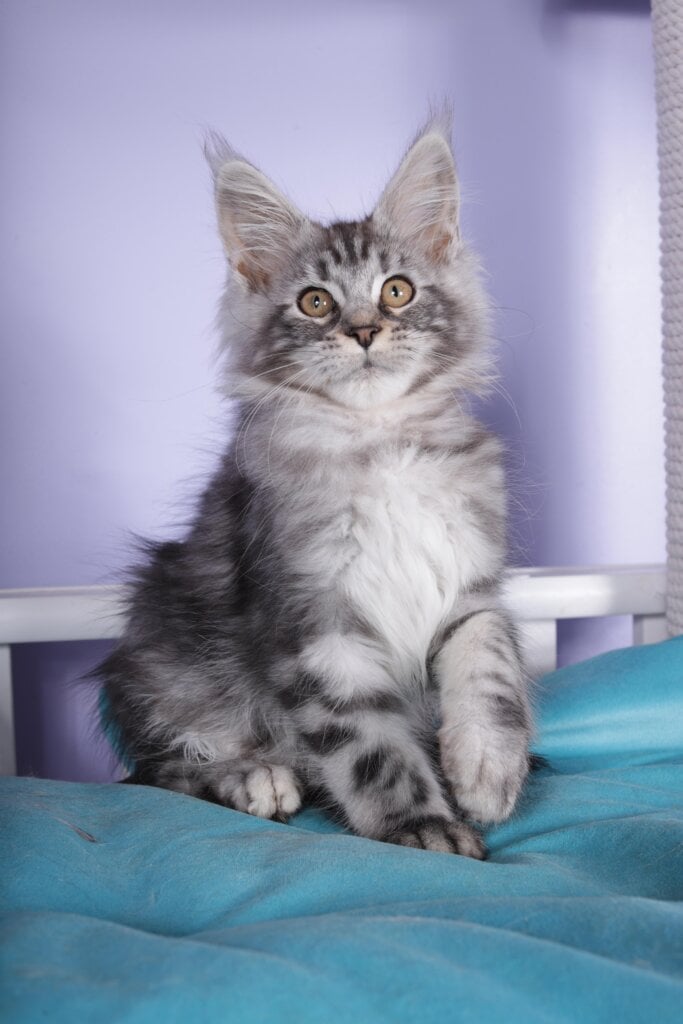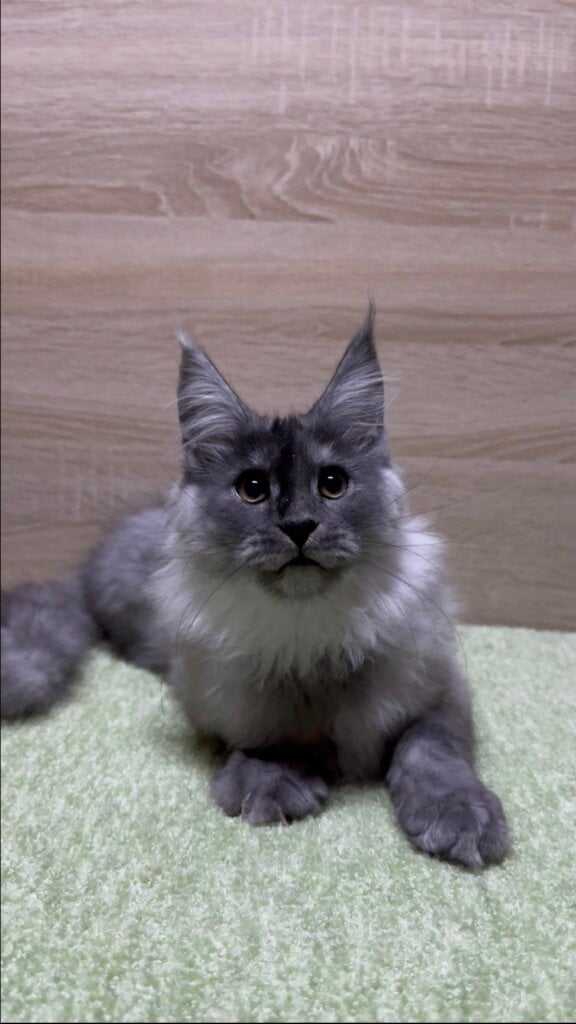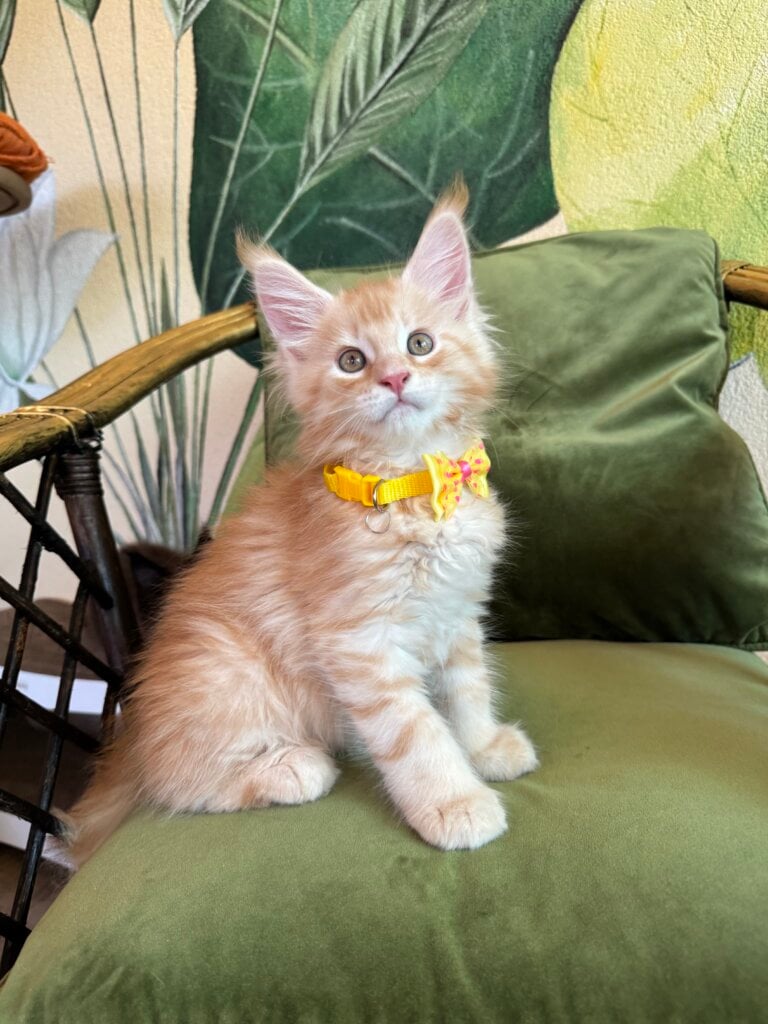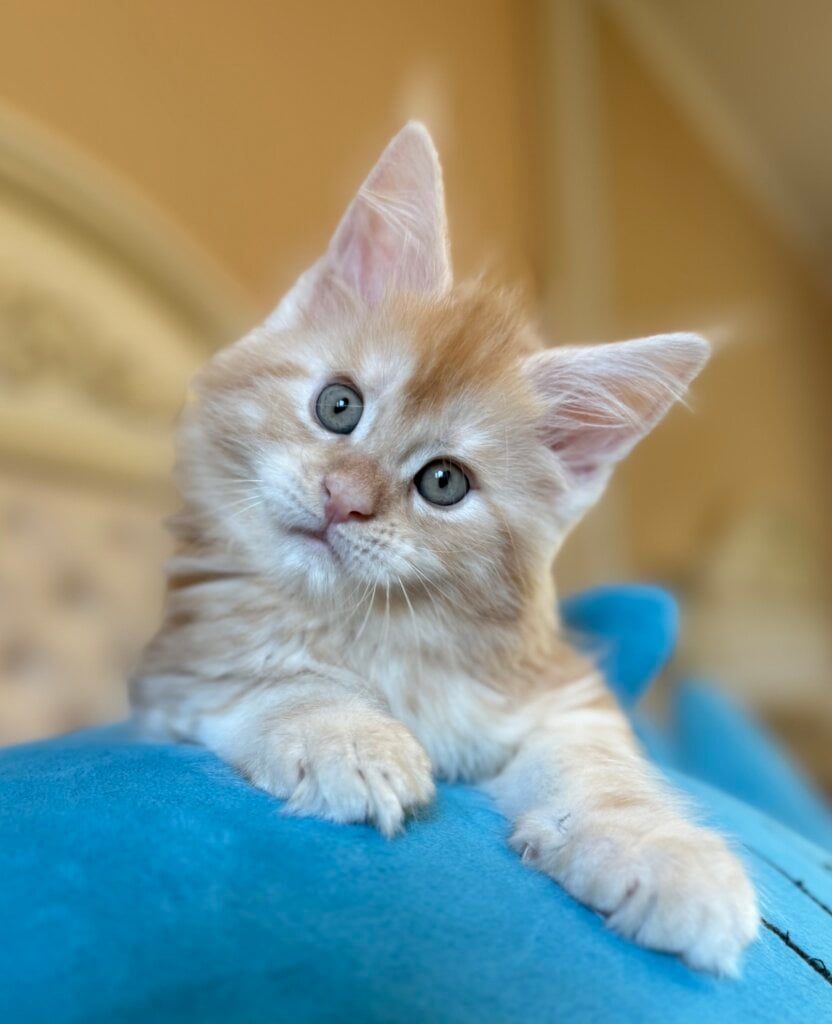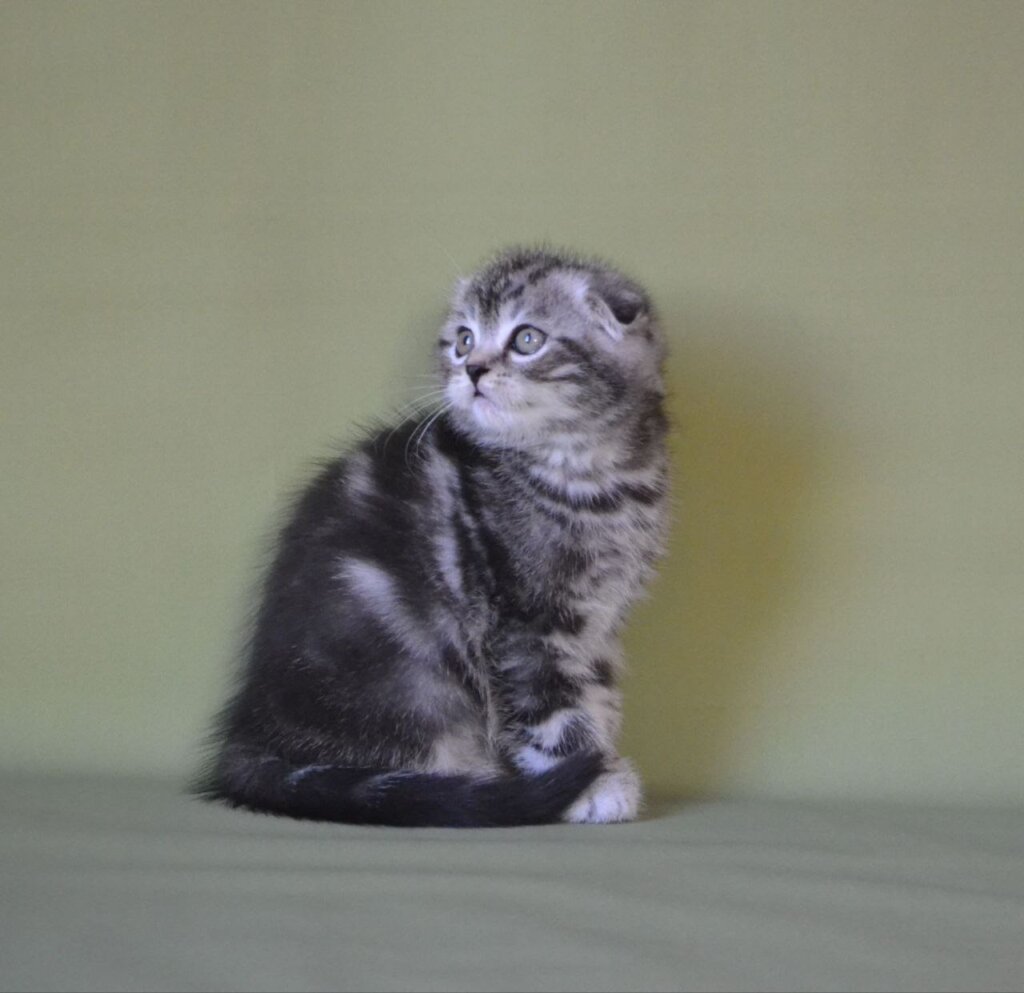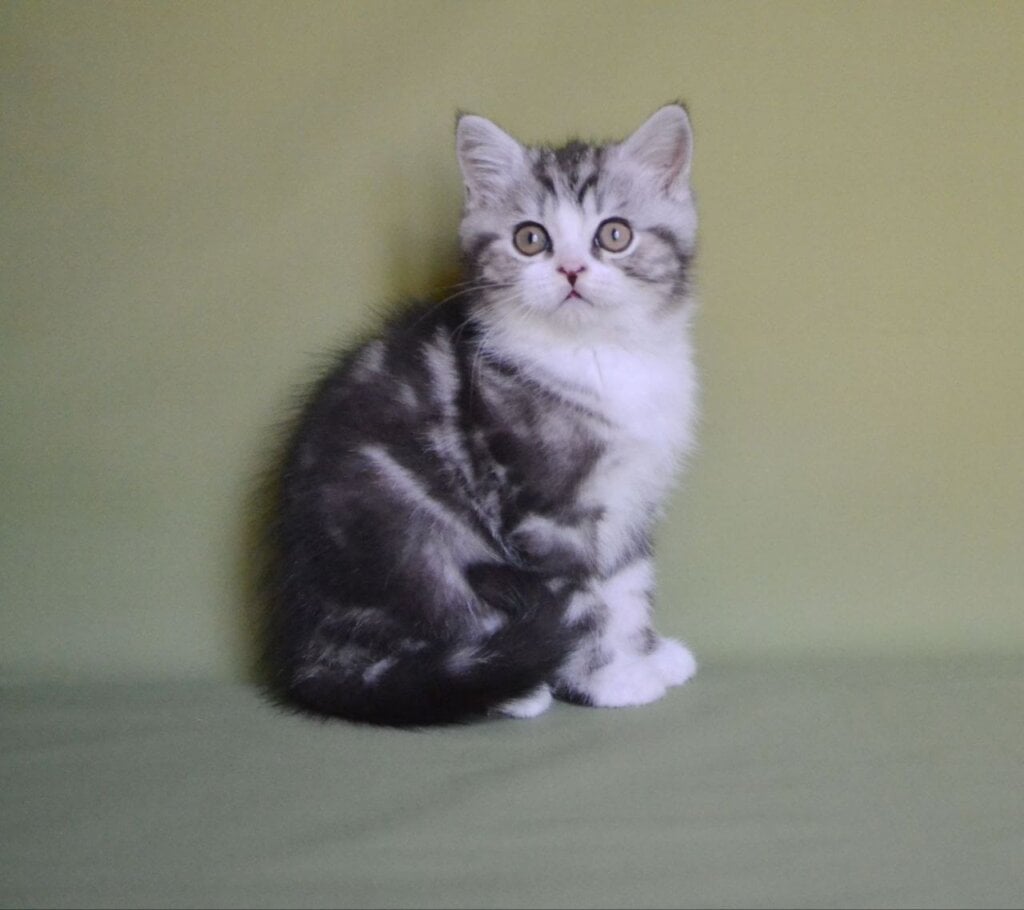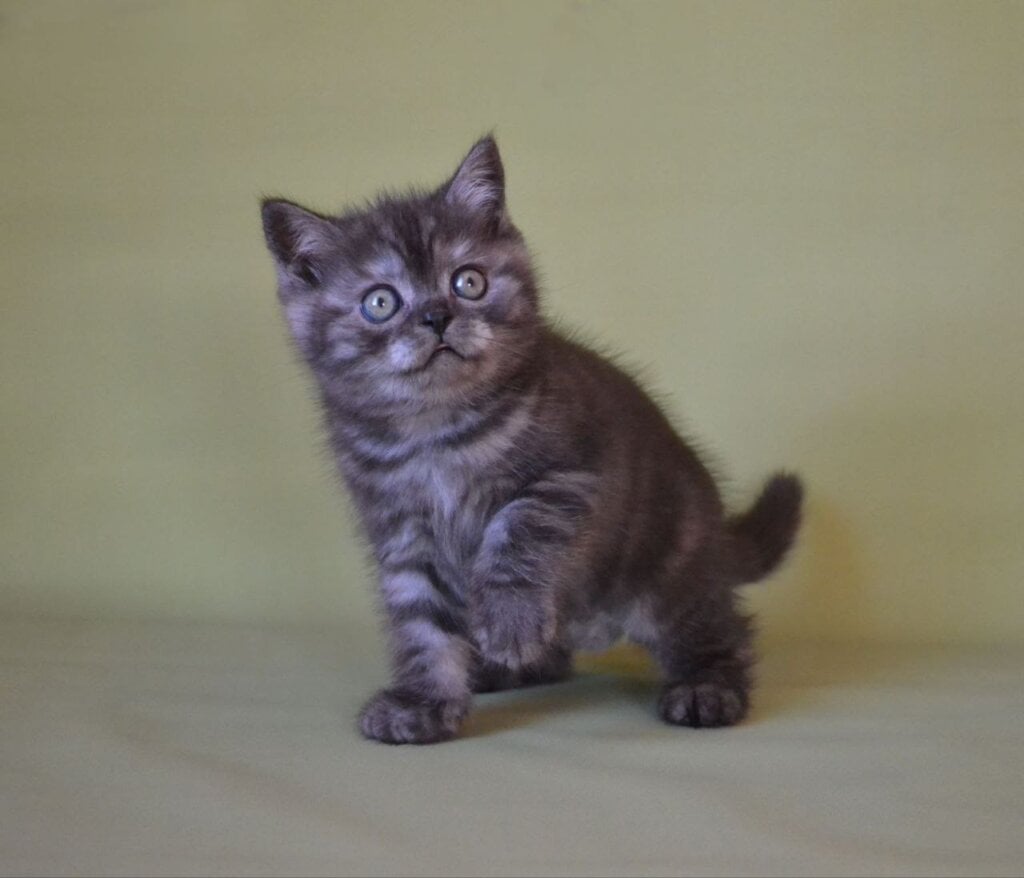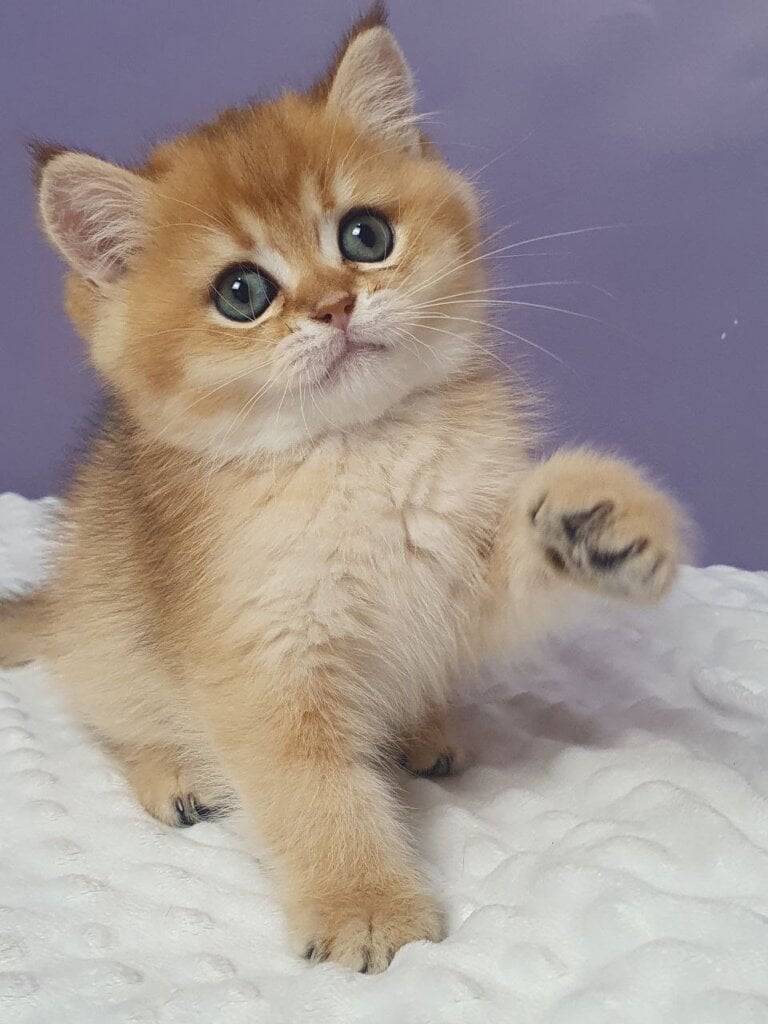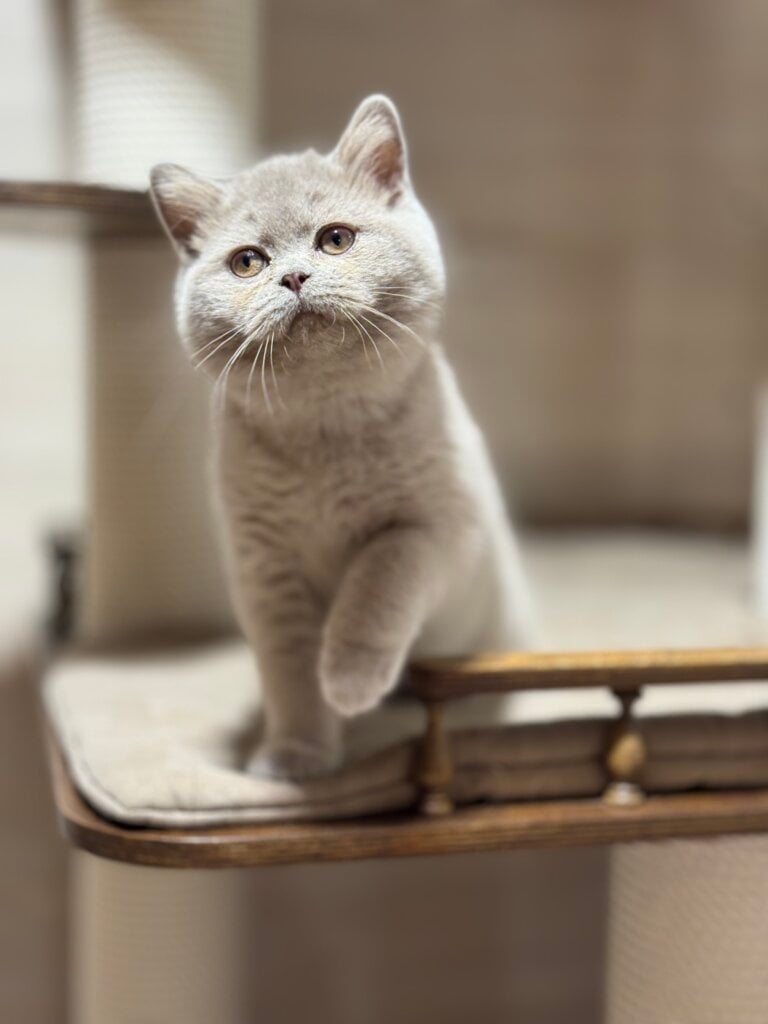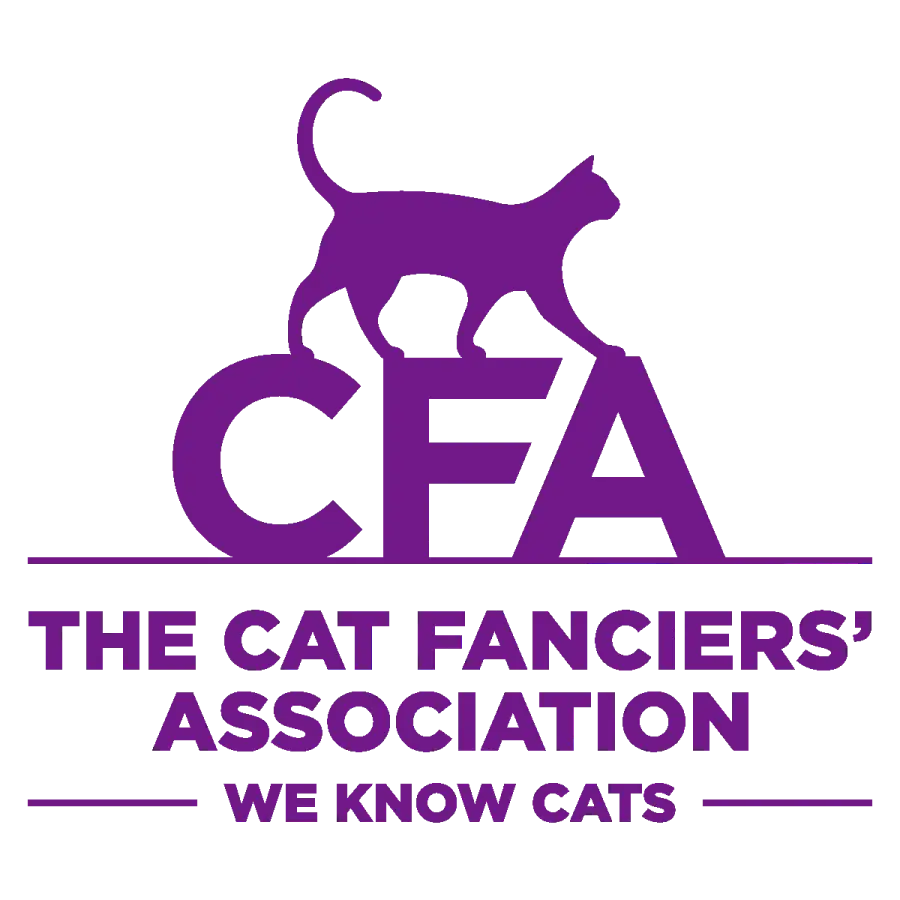Key Takeaways
- Maine Coons are naturally chatty cats, well-known for their unique meows, chirps, and trills that help express every mood and thought. By understanding these sounds we can make a more informed guess at what they need.
- Meowing functions as a mode of communication through which Maine Coons can vocalize feelings, stresses, or social needs. Understanding meow frequency and tone Paying close attention to meow frequency, tone, and pattern will help you figure out what they’re trying to convey.
- Hunger, boredom and nighttime loneliness are common environmental causes for meowing. By understanding and addressing these triggers, you can help minimize the cause of excessive or unwanted vocalization.
- Each meow means something distinct, like when they’re hungry, when they’re asking for attention, or when they’re in physical discomfort. By detecting patterns in their vocal behavior, we can begin to react in kind.
- As with all behavioral concerns, the first step is to always rule out any health issues. Contact your veterinarian if you see any sudden or unusual shifts in your Maine Coon’s meowing.
- Always use positive reinforcement when training your Maine Coon. Develop a daily schedule. Avoid excessive meowing and improve your relationship with these specialist cats!
Why Do Maine Coon Cats Meow?
Charming, intelligent, and loyal, Maine Coons steal the hearts of every person they meet. Their vocal proclivity only adds to their allure! By understanding why Maine Coons meow, we can better cultivate a stronger connection with them while catering to their needs in a more fulfilling way.
Maine Coons: The Talkative Breed
Maine Coons are known as a pretty “chatty” breed. Maine Coons don’t hold back on the meowing! Different from other kitties meowing only sometimes, these cats usually are more vocal with different sounds including chirps, trills and classic meows.
This loud behavior goes hand in hand with their gregariousness. These social creatures flourish with involvement, and their vocalization is just one of the many ways to keep them engaged with their humans. Most Maine Coon owners will wonder why their cats meet them at the door with excited meows.
These felines are fond of participating in “discussions” throughout daily tasks.
Meowing as Communication
Meowing is the Maine Coons main way of communicating. They’ve figured out a way to communicate all their physical and emotional wants and needs through it. Hunger or thirst may elicit meowing, as well as demands for attention or cuddling.
For example, a Maine Coon will typically meow loudly and repetitively if their food dish is not filled. They rub against their human for a warm cuddle fest as well. In fact, about 60% of owners notice their Maine Coons meow to initiate interaction.
This sweet behavior really illustrates just how much these cats power their little voices to further connect with their humans.
Vocalization vs. Breed Standard
Although Maine Coons are naturally vocal, they don’t speak without purpose. The breed standard for Maine Coons calls for a calm, gentle temperament, so their vocalizations are typically not loud, harsh sounds.
This is in accordance with Maine Coons’ reputation as loving lap cats and gentle pets. Unlike dogs that bark for attention or to play, cats’ vocalizations almost never break the quiet solitude. This adaptability makes them a good fit for homes where peace and quiet matter.
Decoding Meow Frequency and Tone
It can turn out that the quality, frequency and tone of a Maine Coon’s meow is high indicator of their mental health. A loud, high-pitched, repetitive meow is usually a sign of extreme excitement or urgency, like when they’re done playing or they want you to feed them.
A deeper, longer meow may indicate pain or even an underlying health condition. Being mindful of these nuanced distinctions allows us to better read their needs.
Environmental Meow Triggers
Environmental considerations play a role in the way Maine Coons vocalize as well. Stressors such as environmental changes, separation anxiety from their owners, or boredom can result in excessive meowing.
When they’re feeling stressed, these cats are likely to let out a meow. This is especially true when traveling or when a new pet comes into the home. If your Maine Coon is going to be alone for extended periods, they are more likely to vocalize.
This behavior indicates that they desire your company or some mental engagement.
Understanding Different Types of Meows
Maine Coon cats are very talkative! Their ability to make many different sounds makes it possible for them to communicate complex needs and feelings. By identifying these meows, along with the rest of their vocalizations, we can build a better understanding and meaningful relationship with our cats.
The best way to know what your cat means is by paying attention to their vocalizations and body language, like tail posture and ear movement. This allows us to better serve their needs and deepens our relationship.
1. The “I’m Hungry” Meow
Though Maine Coons are known for being enthusiastic eaters, their “I’m hungry” meow is pretty clear and easy to distinguish. This meow is typically quick and chirpy, meant to jangle our nerves around meal times.
It’s often paired with other behaviors such as following us around the kitchen or sitting by their food bowl waiting expectantly. If we’ve got a good feeding schedule going, they’ll be the ones to start yowling regularly as their food time comes near.
Provide a regular feeding schedule too – cats can get unnecessarily chatty if their food delivery is unpredictable.
2. The “Pay Attention to Me” Meow
This particular meow is usually quieter and more drawn out, indicating their readiness to engage. Maine Coons are social creatures.
They enjoy hanging out with their humans and employ this vocalization to entice us to engage in a game, petting, or simply spending time near them. Cats frequently accompany this type of meow with physical movements.
They are so affectionate and love to rub against our legs or hop onto our laps while they talk! Ensuring regular interaction and playfulness will make this call more cheerful and avoid sad abandonment undertones.
3. The “I’m Unhappy” Meow
When Maine Coons are annoyed, their meows tend to be deeper and elongated. This happens, for example, when they’re confronted with something they don’t like, like a closed door or a new, scary setting.
Waiting to detect signs such as a swishing tail or flattened ears would give additional context. Taking steps to address the source of their discomfort will decrease this vocalization over time.
4. The “I’m Hurt” Meow
This is a meow with more edge to it that more clearly expresses urgency and pain and distress. If your Maine Coon unexpectedly begins meowing in a new way, take note.
If you see that they’re acting differently too, such as hiding more or not eating, see a vet immediately. Regular checkups are key to keeping them happy and healthy, catching problems early, and maintaining overall quality of life.
5. The “Hello” Meow
Maine Coons are naturally social creatures, and their “hello” meow is a friendly greeting. This meow is typically high-pitched and staccato.
It’s cat speak for “Welcome back!” Their greeting as we open the door or come into the house. Meeting this meow with a soft voice or slow, calm petting encourages their sociable nature and builds the bond of trust you both share.
6. Chirps, Trills, and Other Sounds
Beyond meows, Maine Coons are particularly well known for making distinctive sounds such as chirps and trills. These are usually only heard when they’re playing or stalking things, and are a result of them mimicking the vocalization in such an activity.
They may also use these sounds to communicate with other cats or to get our attention to something cool – we’re not quite sure the reason behind these noises. Watching these distinct vocalizations combined with their active, bouncy body language can give you a lot of tells on what they’re feeling and what they’re into.
Maine Coon Meowing: Emotional and Physical Needs
Maine Coons are very chatty creatures. They atone for it by captivating their humans with a wonderful repertoire of meows and chirps. These vocalizations have greater significance than just warning you to shut the window. They demonstrate their emotional needs, physical health and social habits.
By knowing why they’re meowing we can better meet their emotional and physical needs and develop a more trusting relationship with these playful, loving, clever friends.
Meowing and Emotional Expression
Maine Coons use their meows to express their emotions and needs. They have an incredible “vocabulary” that varies greatly, with many producing sweet, soft chirps or trills when happy or in a playful mood.
For example, you might find your Maine Coon meowing softly as a way of saying hello after a long day, showing their love for you. If they are experiencing stress, like a change in their environment or routine, they might meow more consistently as an outlet for that stress.
With their high sensitivity to their environment, even the tiniest change, such as a new piece of furniture, can provoke vocal responses. Owners often report that their Maine Coons develop their own “languages.
These companions can even reproduce specific pitches of human speech, making interaction seem unique and lively.
Meowing Due to Physical Discomfort
Maine Coons will meow as a way of indicating their physical needs or that they’re unwell. If their normal feeding schedule has been interrupted, a loud, insistent meow can mean your Maine Coon is either hungry or thirsty.
Similarly, they might alert us to discomfort caused by illness, injury, or even something as simple as an empty litter box. Other Maine Coons tend to be quite chatty with unique sounds and meows.
They warn their humans of danger, like unusual sounds or unknown entities outside the house. Responding to these cues not only helps protect their physical needs but deepens trust and respect.
Meowing and Age-Related Changes
When they get older Maine Coons vocalize more because it has to do with their well-being or mental health. Senior felines can be prone to increased meowing as a result of confusion or age-related anxiety, particularly during late-night hours.
Keeping track of these new vocalizations is an important step towards help identifying the potential issue that should be seen by your veterinarian. Giving them a safe, predictable home to grow up in will help reduce their anxiety and allow them to thrive into maturity.
Meowing and Social Interaction
Social by nature, Maine Coons are happiest when engaged with you and will frequently meow to prompt play or gain attention. For instance, their tendency to meow while trailing their humans around the home is a poignant reminder of their emotional needs for connection and contact.
Proper training and socialization enhance this communication, allowing Maine Coons to express their needs clearly and uniquely adapt to their owners’ routines.
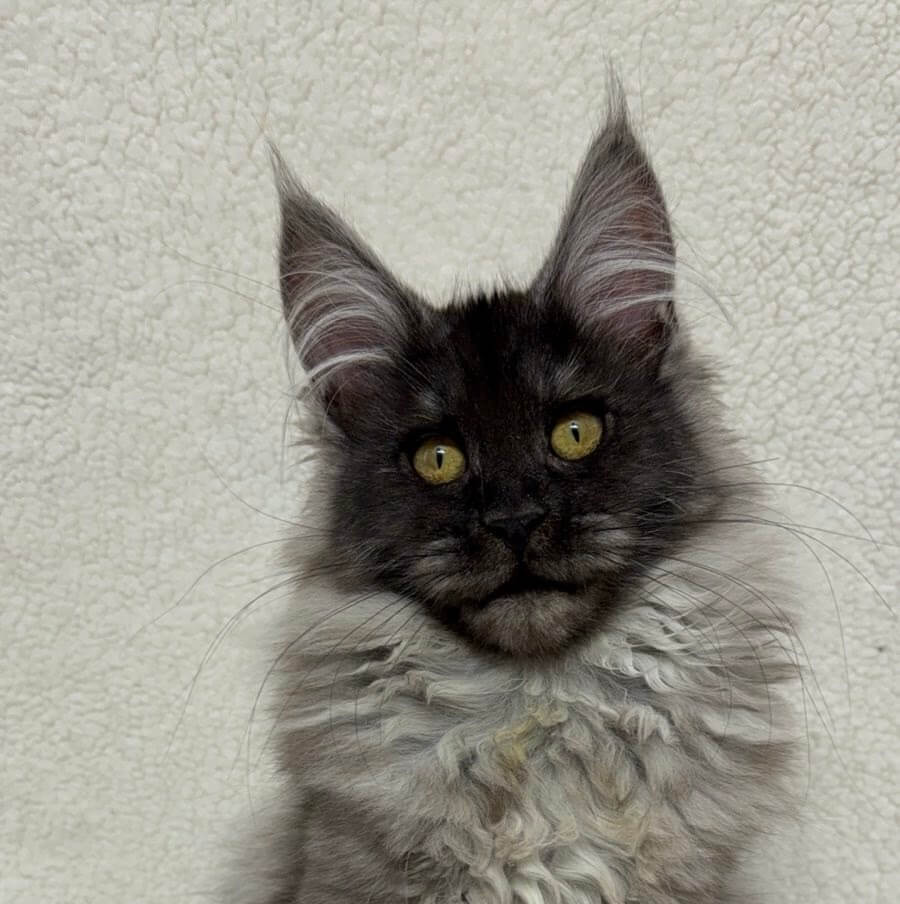
Address Common Meowing Triggers
Maine Coons, with their sweet-tempered disposition and loving demeanor, may, at times, catch their guardians off guard when it comes to talking. As annoying as these meows can be, they’re pretty adorable. Once you know the why, you can work to clear any issues and make home life peaceful and pleasant for everyone.
Meowing for Food or Water
If Maine Coons want food, they are very vocal and will let you know. Their food-based meowing is a confirmed quirk, since these kitties make intense connections to feeding schedules. One example of this is if dinner is just a few minutes late, they decide to make noise to tell us.
This behavior is more than a response to hunger; it’s to the relationship they have learned to create around meal times. Maintaining a predictable routine and providing free access to clean drinking water may help reduce these verbal requests.
For instance, feeding them with an automatic feeder can cut down on their surprise and give the new behavioral benefit of increased convenience to a busy home.
Meowing for Playtime
Play-induced meowing is another frequent behavior, particularly for younger Maine Coons. These kitties are very active and enjoy being kept busy with interactive play. If they don’t have appropriate channels to exert that energy, they might start meowing to get you to play with them.
A Maine Coon might approach with a toy in its mouth or sit near a favored play area, meowing until we initiate a game. Daily play sessions with feather wands or laser pointers will ensure your kitty receives the mental and physical stimulation they need.
This engaging game helps to address excessive vocalizations in pets.
Meowing Due to Boredom
Much as Maine Coons may be thrilled with the prospect of enjoying a multi-hour cat nap, they can get bored, particularly when left for too long. After being sleepy all day, they might have a lot of energy built up and want to express it by meowing at night when you’re trying to sleep.
Introduce puzzle feeders and interactive toys to help your cat stay stimulated in your absence. A cat tree will do the trick here too, eliminating many of those boredom-induced meows.
Meowing at Night
Nighttime meowing can be especially frustrating. Bringing in new animals may interfere with a Maine Coon’s routine or territory. This change in their normal routine can cause them to become more vocal.
Age-related meowing is prevalent in senior cats, due to disorientation from cognitive dysfunction or the need for comfort during nighttime hours. Address common meowing triggers by offering a soft, comfortable bed to aid nighttime rest and keep your cat’s routine consistent for a peaceful and relaxing environment.
Meowing at Windows
Maine Coons are smart and inquisitive, and windows provide an endless source of entertainment with a dynamic view of the outside world. Birds, squirrels, or even a moving car outside can get them all riled up, and they let that out vocally.
For instance, a Maine Coon may make a soft chirp or meow when it sees your bird feeder filled with avian delights. Creating window perches or birdwatching stations can help funnel this natural curiosity in a healthy direction.
How to Respond to Your Maine Coon’s Meows
Maine Coons are among the most vocal of all cat breeds. They enjoy expressing their feelings with a wonderful combination of chirps, trills, and meows. By interpreting their sounds and reacting appropriately, you’ll strengthen your bond and improve their quality of life.
So, here are some followable steps you can take to respond to their meows the right way.
1. Rule Out Medical Issues First
When your Maine Coon begins meowing consistently or differently than before, respond immediately. Whatever the reason, after you enjoy the cuteness of your Maine Coon’s meows, it’s prudent to check on their health.
If all else fails, consult a vet. Excessive or unusual vocalizations can sometimes be a signal of an underlying medical issue, such as pain, discomfort, or illness. A trip to the vet is important.
It helps to rule out other conditions like dental issues, urinary tract infection, or thyroid conditions. Early detection can not only help avoid complications but provide you with peace of mind, so it’s always best to err on the side of caution.
2. Identify the Meow’s Cause
Maine Coons don’t just meow to hear themselves meow – find out what they want! A quick, abrupt meow indicates a need for food. An inquisitive meow is commonly found when a cat is investigating unfamiliar territory.
Gauging their body language – tail flicks, ear positioning, and eye contact – may give you helpful indicators. Identify the pattern – meowing at feeding time or when they want to play will help you learn what they want and ask for it faster.
3. Provide Attention and Play
These sweet, loving cats truly flourish on social contact and are more likely to meow to get your attention. Engaging with your Maine Coon through interactive play or gentle strokes can fulfill these emotional requirements.
Interactive toys, like feather wands or laser pointers, are perfect for engaging their natural hunting instincts while strengthening your bond.
4. Ensure Basic Needs Are Met
Maine Coons can be very vocal about their needs. If their food bowl is low and/or their litter box isn’t up to par, they sure will! Keeping a schedule for feeding and cleaning litter boxes can help cut down meowing when it comes to not having basic needs met.
5. Consider Environmental Enrichment
Boredom might result in more frequent noisiness. Being intelligent and curious, Maine Coons need something to do, so having plenty of scratching posts, climbing towers, or window perches can help tire them out.
Rotating their toys or giving them puzzle feeders can help keep their minds busy and dissuade them from trying to get your attention with meows.
6. When to Seek Professional Help
If you’ve been meeting all needs and your Maine Coon is still meowing excessively, it can be time to consult with a cat behaviorist. Beyond general health, they can identify underlying conditions such as stress, anxiety, or behavioral patterns.
After that, they provide tailored solutions to improve your kitty’s contentment.
Maine Coon Vocalizations vs. Other Breeds
Maine Coons are popularly known for their conversational customs, making them different from most cat breeds. Their vocal nature, besides their expressive meowing, is a great way to get your attention. This is just another example of Maine Coons having bright personalities. By learning about how Maine Coons vocalize, you’ll gain insight into their distinct manner of communicating. Through examining these unique vocalizations, we can further understand the ways in which they communicate with their surroundings and human friends.
Vocalization Tendencies Compared
When it comes to vocalization, Maine Coons are extremely unique among domestic cats. Most other breeds only meow when they want something urgent, such as food or some pain relief. In comparison, Maine Coons have more frequent and greater range of vocalizations.
In reality, many Maine Coon owners consider their Maine Coons to be 20 times more chatty than other breeds. This vocalization, while sometimes annoying, likely comes from a need to chat and their sociable personalities. Your Maine Coon will probably call out to you with a gentle chitter.
To get your attention, it will elongate its meow and will even answer you back when you talk to it. Their vocal personalities give them a special charm, as their vocalizations help them come off as a breed that loves to “talk” to its owners.
Unique Maine Coon Sounds
What makes Maine Coons unique is their impressive variety when it comes to sounds – not just meows, like most other cat breeds. Known for their complex vocalizations, they frequently emit chirps and trills that can indicate excitement or interest.
For example, if they’re investigating a new plaything or environment, you may hear a collection of soft, inquisitive meows. They are very vocal when it comes to letting you know they’re hungry. Sharp and insistent meows will often be heard as they walk back and forth around their food dish.
This impressive vocal repertoire is a result of their large personalities and their effort to get their needs and feelings heard.
Breed-Specific Communication Styles
Maine Coons don’t only make sounds to get their message across, but they combine engaging sounds with expressive body language. A brief, sudden meow indicates annoyance or an alert. A lower, prolonged meow implies playtime.
By recognizing and interpreting these vocalizations, owners can foster a stronger bond with their Maine Coons. This understanding prepares them to understand their cats’ emotional states and needs and react accordingly.
By understanding these signals, we can build a better connection and have a more fulfilling life together with these chatty felines.
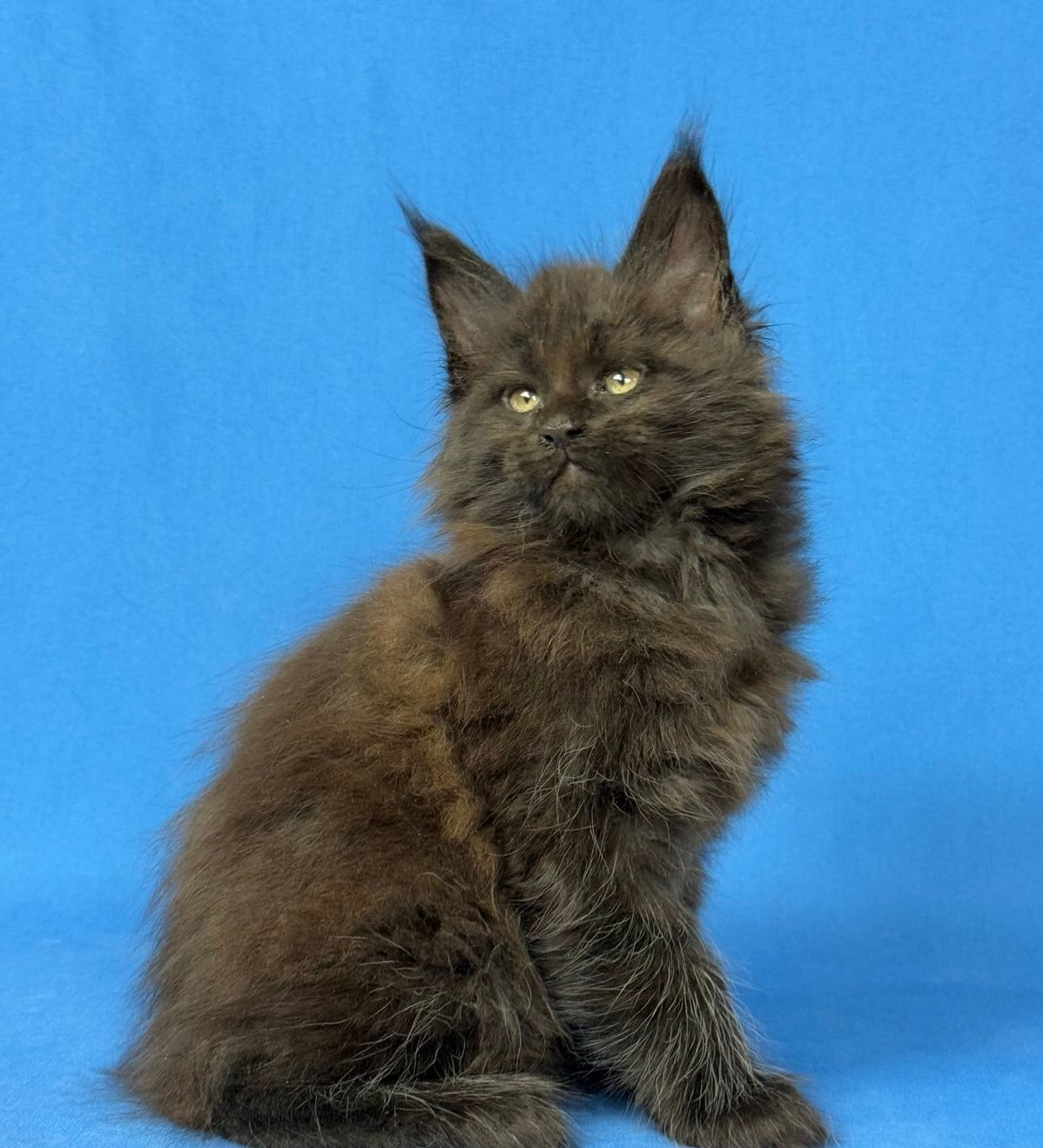
Debunking Myths About Maine Coon Meowing
Pet owners love Maine Coons for their huge size and gentle disposition. It’s the sounds they make that usually bring about the greater intrigue – and frequently, the greater myth. These cats are often more quiet than their other cat counterparts.
It’s those special sounds and strange communication skills that make them all the more vocal, if not more so, expressive. Let’s debunk some myths about Maine Coon meowing and learn what their chatter can tell us about their attitudes.
1. All Meows Are Not Created Equal
Furthermore, Maine Coons don’t “meow” nearly as much as Siamese or Oriental cats. Boy, do they ever have their special ways of calling you to them! Rather than typical meowing, Maine Coons will be more prone to trilling, chirping, or cooing gently when trying to speak.
These sounds can be soft, musical, even flute-like, paired with soft body language to communicate their desires or feelings. Your Maine Coon may make a happy chirp when they see birds passing by their window. They often start trilling enthusiastically when welcoming their human home after a day away.
Interestingly, Maine Coons are expert communicators in ways other than vocalization. They express their feelings and needs through a combination of body language and vocalization. This involves tail flicks, ear movements and eye contact.
In short, Maine Coons mesmerize their families with a harmonious blend of vocal and silent expression. This is just one of the many reasons why Maine Coons are so irresistible.
2. Meowing Isn’t Always Annoying
The reality is, for Maine Coons, especially vocalizing is used as a method to create closer relationships with their humans. These sounds are almost never demanding or intrusive. Instead, these meows are a testament to the breed’s easy-going and loving personality.
In fact, the majority of Maine Coon owners report their cats are quite quiet or moderately vocal. Only 3% of them claim high volumes or constant meowing. When it comes to their chirps and trills, these generally sound much more congenial and chatty than demanding.
For instance, if your Maine Coon is looking for attention, instead of meowing loudly, they might use a more pleasant coo to get you to look their way. This gentle, low-pressure style meshes perfectly with their laid-back disposition, and Maine Coon cat meowing quickly becomes a charming addition to any home atmosphere.
3. Ignoring Meows Can Be Harmful
Though not as vocal as other cats, dismissing a Maine Coon’s efforts to speak can result in annoyance or unaddressed needs. Even their soft trills and chirps serve a communication function – they might indicate hunger, distress, or a need for attention.
By being mindful of these sounds, you can deepen the connection and care for your feline friend.
Training and Communication Strategies
Maine Coons tend to have larger than average, expressive personalities that often command the room. Their varied vocalizations range from trills, chirps all the way to meows. By recognizing and fostering their communication style, you build a connection based on trust and compassion, and better meet their needs.
By using structured methods, we can guide our Maine Coons to express themselves in ways that are both natural and manageable.
Teach Alternative Communication
Vocalizations paired with Maine Coons’ body language is another great way to interpret this breed’s social cues. Cat’s vocalizations usually indicate an urgent need, such as eating or calling for help. To ensure this interaction is a positive one, teach them to trill instead.
As a human, you might find that trilling usually expresses joy or acts like a pleasant hello. Reinforcing use with observed or shapeable sounds with a treat or a rub can help strengthen their usage in everyday communications.
Body language is a big factor as well. Just observing tail flicks, ear positions, and perhaps most importantly, where they are looking, can tell you so much. As an example, a relaxed tail and posture indicates that your dog is at ease, while a lowered tail could indicate that your dog is feeling insecure.
Creating a safe and comfortable space for them to deliver these non-verbal cues with great confidence is key. In their culture, silence is an essential factor in their communication. It communicates calm or concentration, and recognizing its value earns trust and respect.
Positive Reinforcement Techniques
Positive reinforcement psychologically reinforces the training, making it more effective in shaping the desired behavior. When your Maine Coon uses appropriate vocalizations or follows a command, offering praise, a small treat, or gentle petting reinforces the behavior.
For instance, if they meow at the door to go outside, redirecting them to a specific sound like a trill and rewarding them encourages alternative communication. Interactive games, such as fetch, stimulate their predatory drive while providing a positive outlet for their energy and a rewarding way to connect with you.
Maine Coons are especially good fetchers, and making this part of their day ensures they receive both physical and mental exercise. A diet, such as Untamed cat food, may enhance their energy and learning ability within a couple of months, making training sessions more productive.
Create a Consistent Routine
As they say, practice does make perfect. So routine is really essential here. Feeding, playtime, and rest should all happen at around the same time to make your Maine Coon feel more at-home.
A predictable schedule cuts down on excess calling out, since they know when to expect certain events. In the long run, this predictability builds trust and ensures interactions are easier for you and your donor.
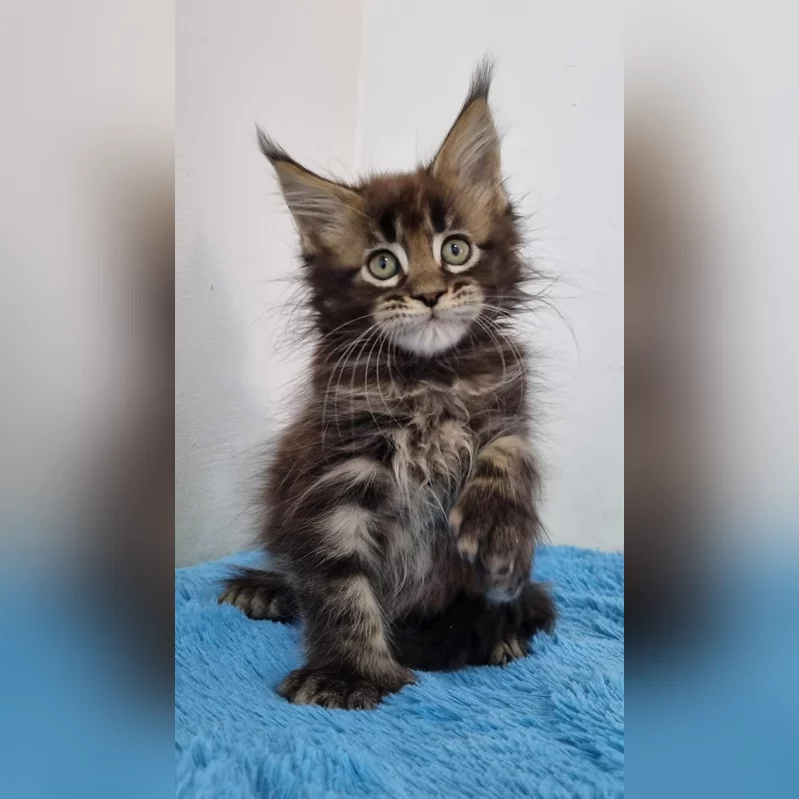
Health and Meowing Changes
Maine Coons are famous for their docile demeanor and their cute, trilling meows. If there are any rapid or drastic changes in their vocal habits, it may be a sign that your cat has health issues. By being mindful of these changes, you can catch problems early and ensure your feline companion continues enjoying life to the fullest.
Sudden Increase in Meowing
If your Maine Coon suddenly begins meowing, pay attention! It may be in pain or it certainly has an urgent need above all else that should command your gaze. For example, Maine Coons can chow down. Excessive meowing usually indicates that they’re either looking for food or craving companionship, something that 8 in 10 cat owners agree with.
If your typically vocal Maine Coon starts meowing excessively, pay attention. This sudden change in voice may be a sign of a health concern. Allergies or eye irritations are common problems, leaving your cat fidgety and under the weather.
A second potential reason is anxiety from their changing surroundings. Moving furniture, introducing new pets to the home, or even new changes in your schedule can cause your cat to start excessive vocalization. Never let your guard down in these circumstances.
If the behavior continues or feels out of character, reaching out to your veterinarian is the best first step to make sure there aren’t any underlying health issues.
Changes in Meow Tone
Changes in the tone or pitch of your Maine Coon’s meow can offer valuable insight into their health. For instance, a hoarse or raspy meow might be a sign of laryngitis, which is often due to too much meowing! This tightens the passages in the nasal cavity.
This condition normally resolves on its own within one to two weeks. Don’t let your cat overdo it and damage their vocal cords any more.
In other instances, changes in tone can be associated with respiratory distress. These problems can be anything from minor arthritis to debilitating neuropathy. Cats with chronic allergic conditions might demonstrate changes in pitch or frequency of their vocalizations.
Notice a change and ask questions right away. Write down any other signs, such as sneezing or coughing, to assist your veterinarian in diagnosing and promptly treating the cause.
When to Consult a Vet
Your Maine Coon’s meowing habits can be an important insight into all aspects of their health and happiness. Though minor fluctuations can be expected, if you notice the minute changes are abrupt or persistent that could indicate a deeper health concern.
For example, respiratory issues, persistent allergies, or even pain might be to blame. Yet frequent veterinary visits are crucial to their continued health. Regular checkups help identify and address issues before they become major problems.
